First published August 2022 | Words and photos by Thảo Phan
Thảo Phan is a contributing writer for Vietnam Coracle. She is currently running TP Garden, an urban garden business in Hồ Chí Minh City, where her passions & values come together to create a healthy community & cleaner environment. Originally from Biên Hoa City, in Đồng Nai Province, she’s spent most of her adult life living in Sài Gòn, although she’d much rather be in the countryside surrounded by trees & flowers….read more about Thảo
Born and raised in southern Vietnam, I’ve been fortunate to have an abundance of fresh herbs and spices around me to use as garnishes, flavourings and even as main ingredients in my cooking and food. Furthermore, before ‘Western medicine’ became widely available in Vietnam as a quick-fix solution to common illnesses, such as colds, stomachaches and indigestion, local people tended to use fresh herbs, spices and other edible wild plants as ‘folk remedies’ or simply turned them into delicious dishes that would make the ‘medicine’ go down more easily. The use of spices and fresh herbs is fundamental to Vietnamese cuisine and culture.
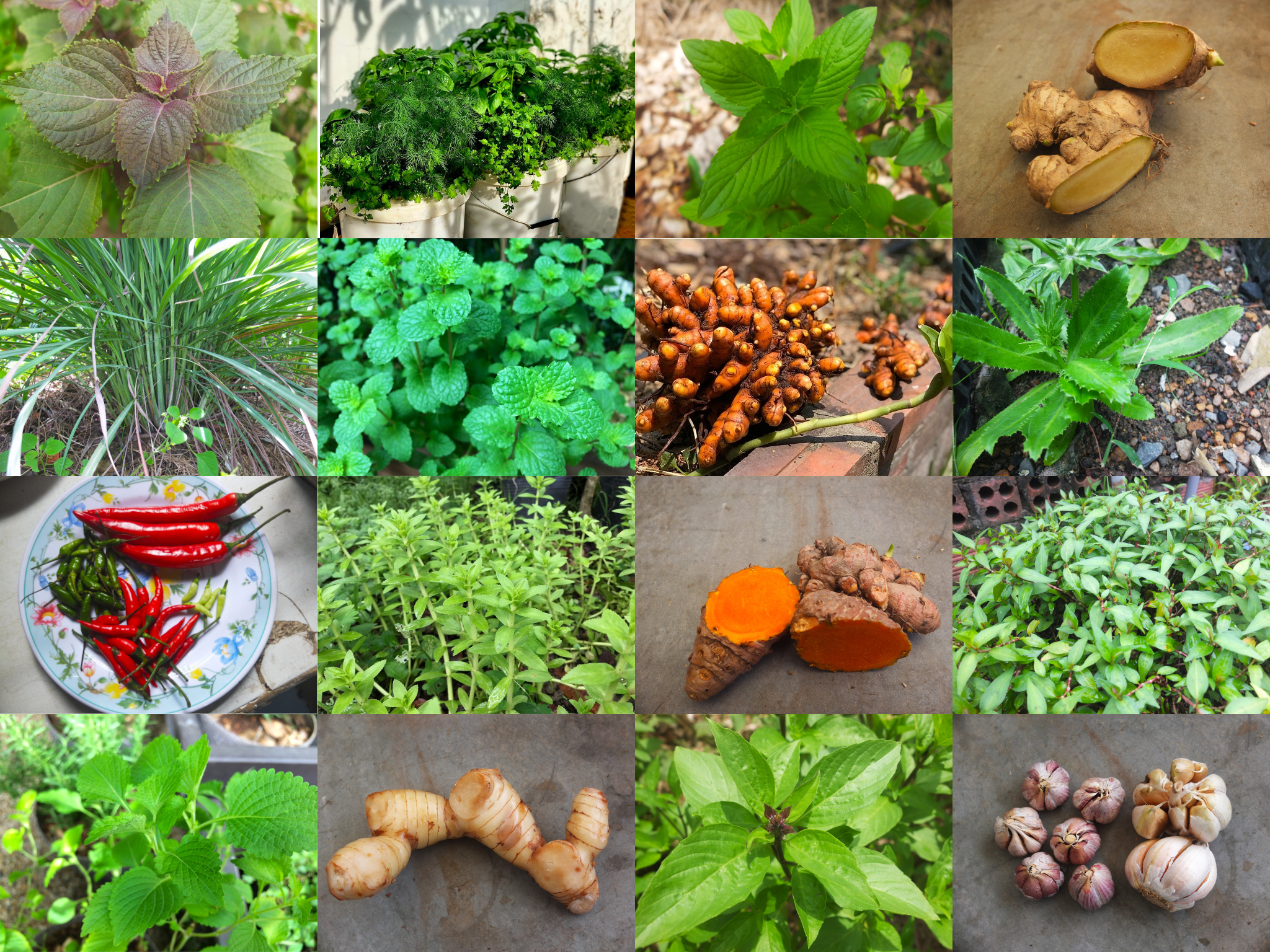
[Back Top]

HERBS & SPICES IN VIETNAMESE FOOD
An Illustrated Guide by a Gardener & Home Cook
I assume most readers will have first encountered Vietnamese cuisine through its noodle soups, especially the country’s most famous one, phở, and perhaps bún bò Huế. What makes these soups so distinctive in taste and aroma is the mixture of spices and, in the south, the addition of fresh herbs. Within my limited knowledge as a gardener and home cook, I hope to walk you through some of the most commonly used herbs and spices in ordinary, everyday dishes in Vietnam. Though most of the herbs and spices listed on this page are used nationwide, some are more common in one region than others due to geographical and cultural differences. Before we dive in, it’s useful to broadly define what part of a plant is considered a ‘herb’ or a ‘spice’. In very general terms, herbs come from the leafy or green part of a plant, and spices come from other parts of the plant, such as seeds, roots, flowers, and fruits.
CONTENTS:
1. Spring Onion (hành lá)
2. Coriander (ngò rí)
3. Garlic Chives (hẹ)
4. Dill (thì là)
5. Culantro (ngò gai/mùi tàu)
6. Rice Paddy Herb (ngò om/ngổ)
7. Vietnamese Coriander (rau răm)
8. Thai Basil (húng quế)
9. Perilla Leaf (tía tô)
10. Vietnamese Balm (kinh giới)
11. Wild Mint (húng cây)
12. Mojito Mint (húng lủi)
13. Fish Mint (diếp cá)
14. Garlic (tỏi)
15. Shallot (củ hành tím)
16. Ginger (gừng)
17. Turmeric (nghệ)
18. Galangal (riềng)
19. Lemongrass (sả)
20. Chilli (ớt)
Please Support this Site
Vietnam Coracle is 100% independent & free to read. There’s no sponsored content whatsoever. If you use & enjoy this website, please consider making a donation or becoming a patron.
Thank you, Tom
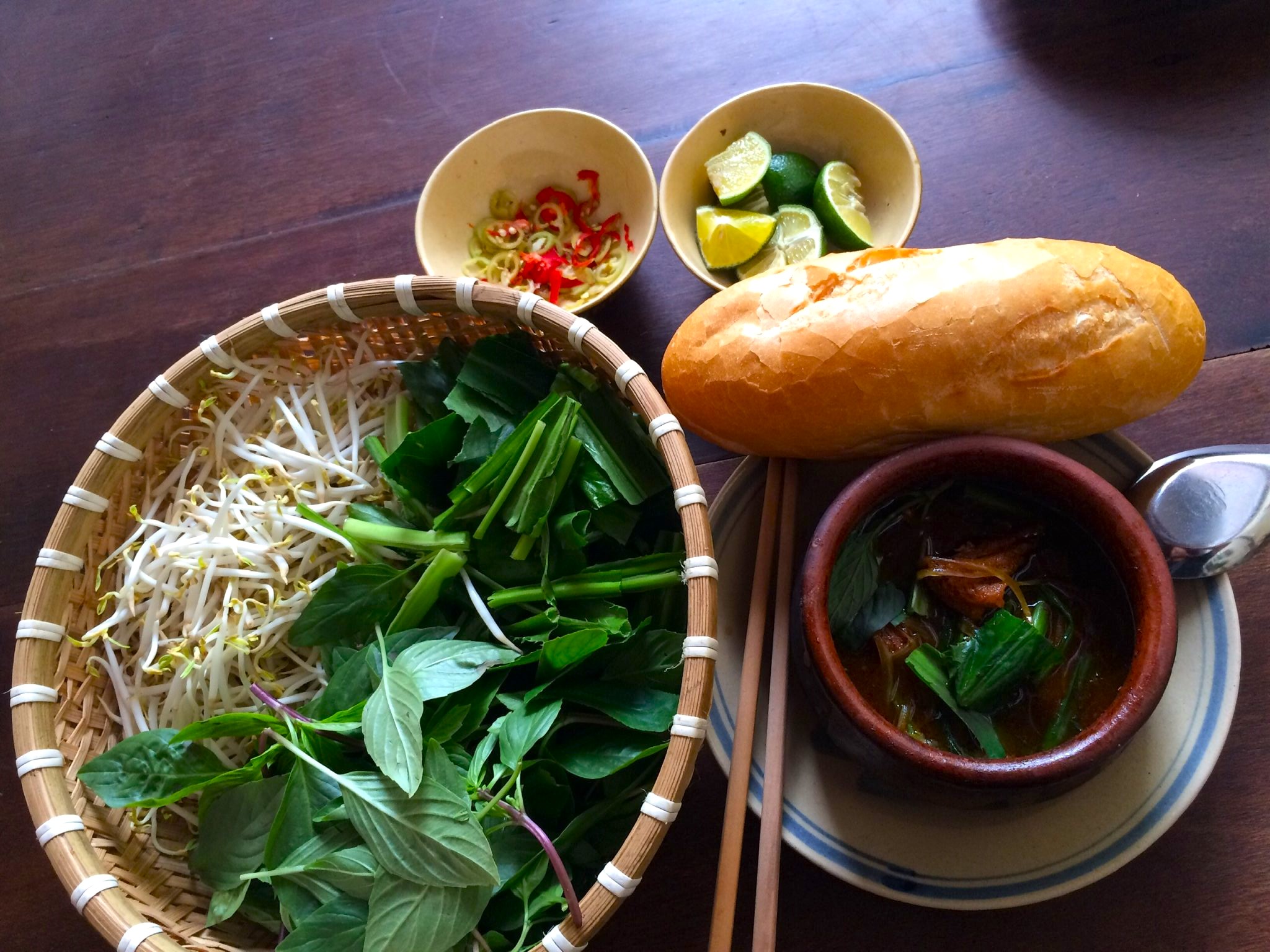

1. Spring Onion (hành lá)
Although it may not seem particularly exotic, spring onion (hành lá) is, in my opinion, the most widely used herb in Vietnamese cooking. In fact, it’s so common that we usually forget it is a herb. In soups, spring onion is often used as a garnish; in stir-fries, it can either be an ingredient (cut into finger length pieces) or a garnish (thinly sliced). Interestingly, the white part (the stem) and the green part (the leaf) are treated differently in the cooking process. Similar to garlic and shallots, when it comes to stir-fried dishes, the stems are added after the oil to enhance both the flavour and aroma of a dish, whereas the leaves are used later for garnish after cooking. A generous amount of thinly sliced spring onions and crushed black pepper are often scattered together on top of hot soups (canh) or stir-fried dishes (món xào) as well as shellfish.
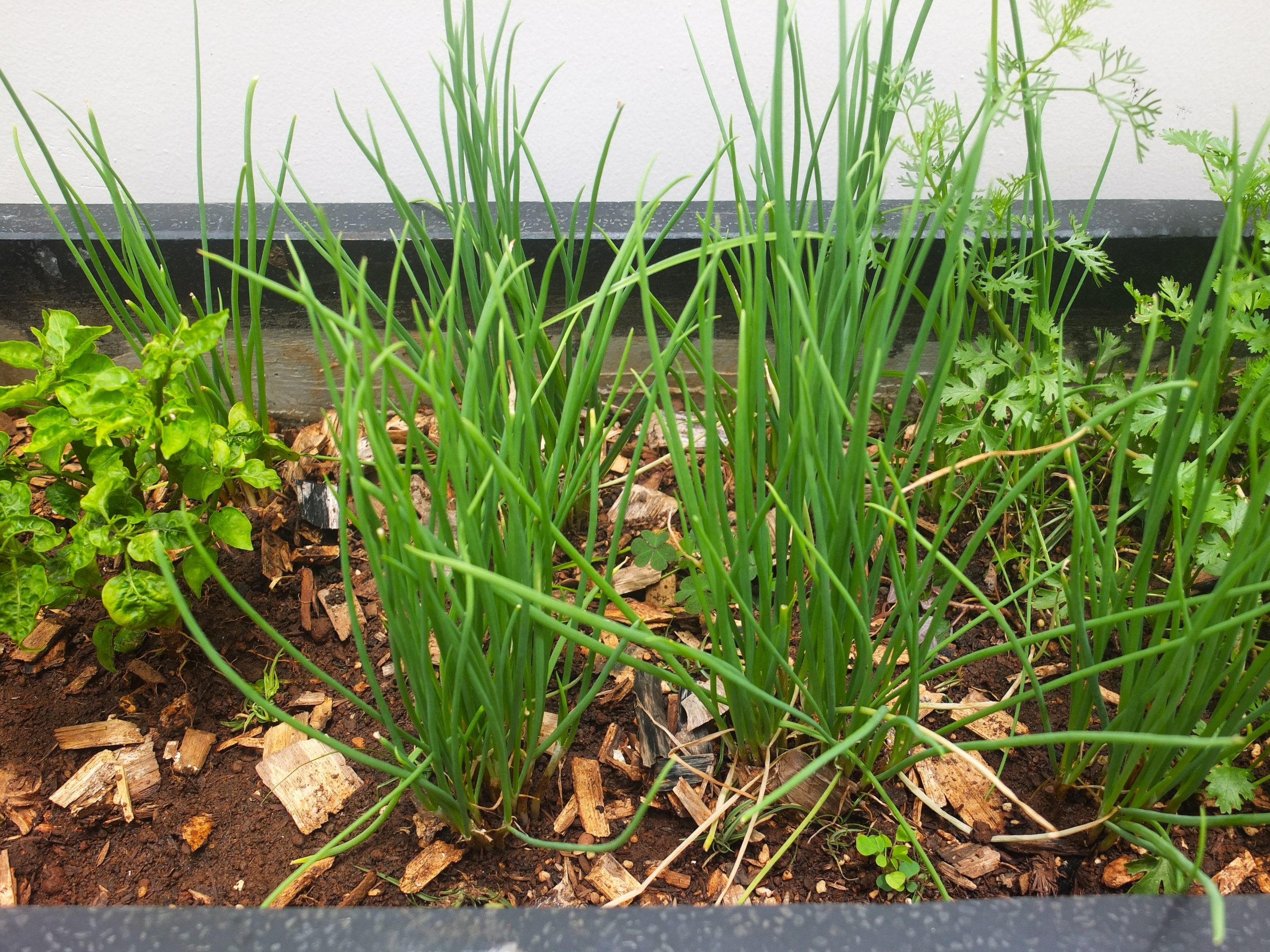
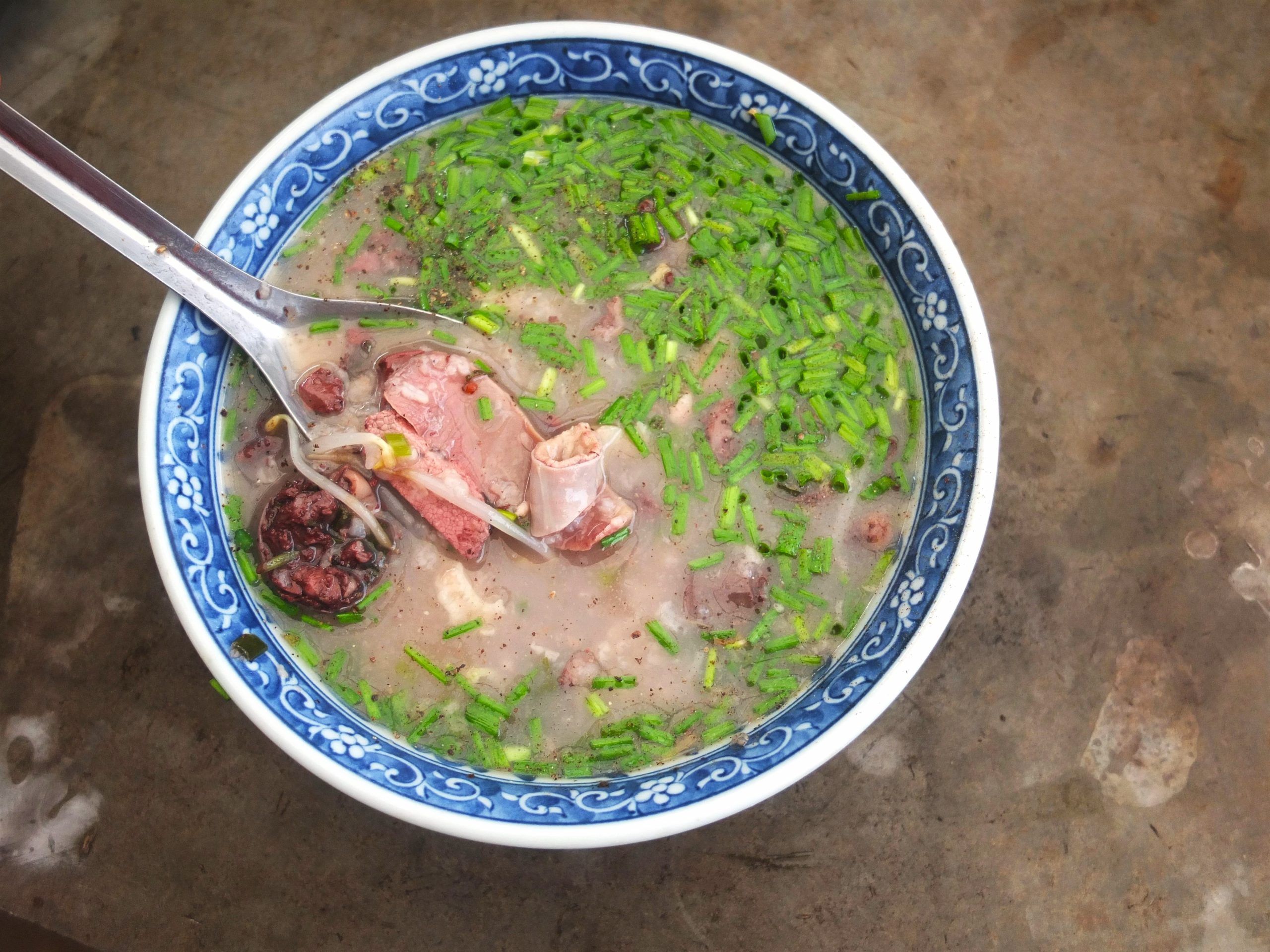

2. Coriander (ngò rí)
Coriander often goes hand in hand with spring onions when it comes to garnishing a bowl of soup or rice porridge (cháo). However, while spring onion can be cooked as a vegetable, coriander is mostly used fresh, either to garnish a dish or to mix into a salad to enhance its flavour and colour. In the southern Vietnam, coriander usually has a bigger leaf and longer stem compared to its northern version. However, northern coriander has a stronger fragrance. Not only are the leaves of coriander used as a herb, its seeds also make a great spice, and its roots are used in making broth to create a stronger taste and aroma.
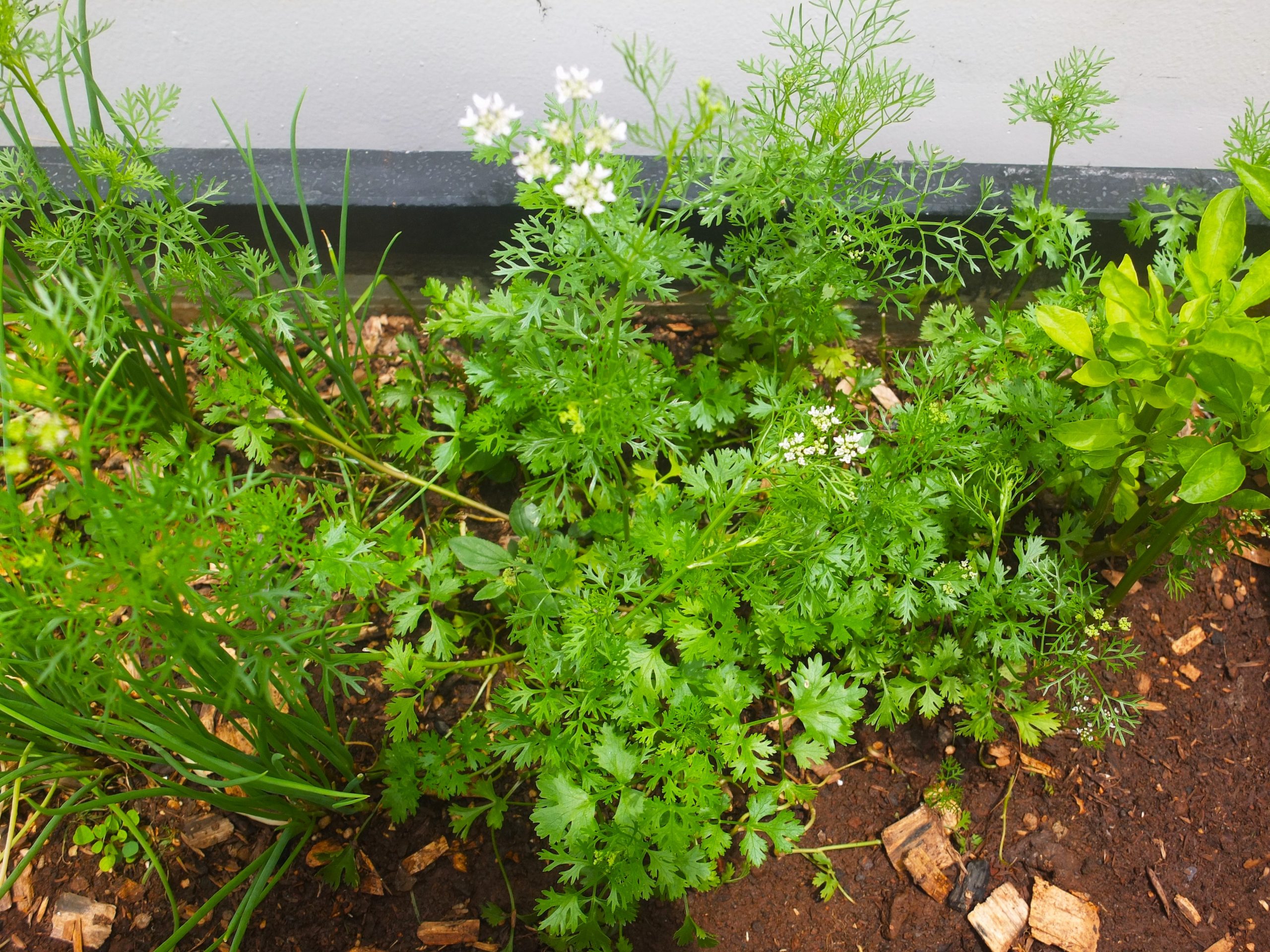

3. Garlic Chives (hẹ)
Unlike European chives, which are often used as a garnishing herb and have a mild onion taste, garlic chives have a stronger flavour (they’re garlicky, as the name suggests) and are often used as a vegetable (mostly in the south) and a herb in Vietnamese dishes. In my dining experience, chives are thinner and have more fragrance in the central provinces of Vietnam and are often eaten raw or used in soups as a garnish, whereas in the south, chives are bigger and often used as a vegetable. (My favourite childhood dish was giá hẹ xào huyết – chives and mung bean sprouts stir-fried with pig blood curd). The chive flower is also edible and has more flavour than the chive itself.
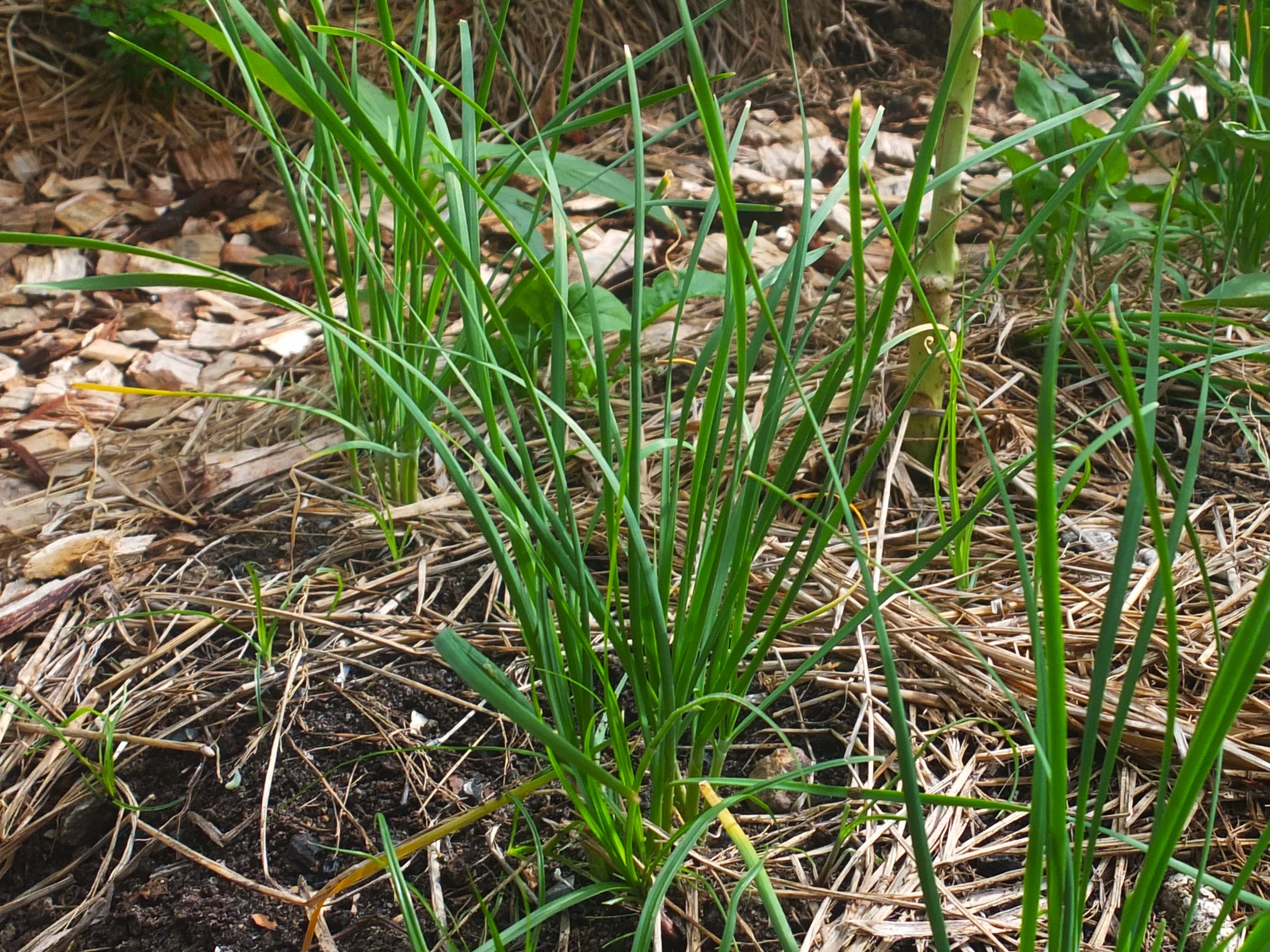
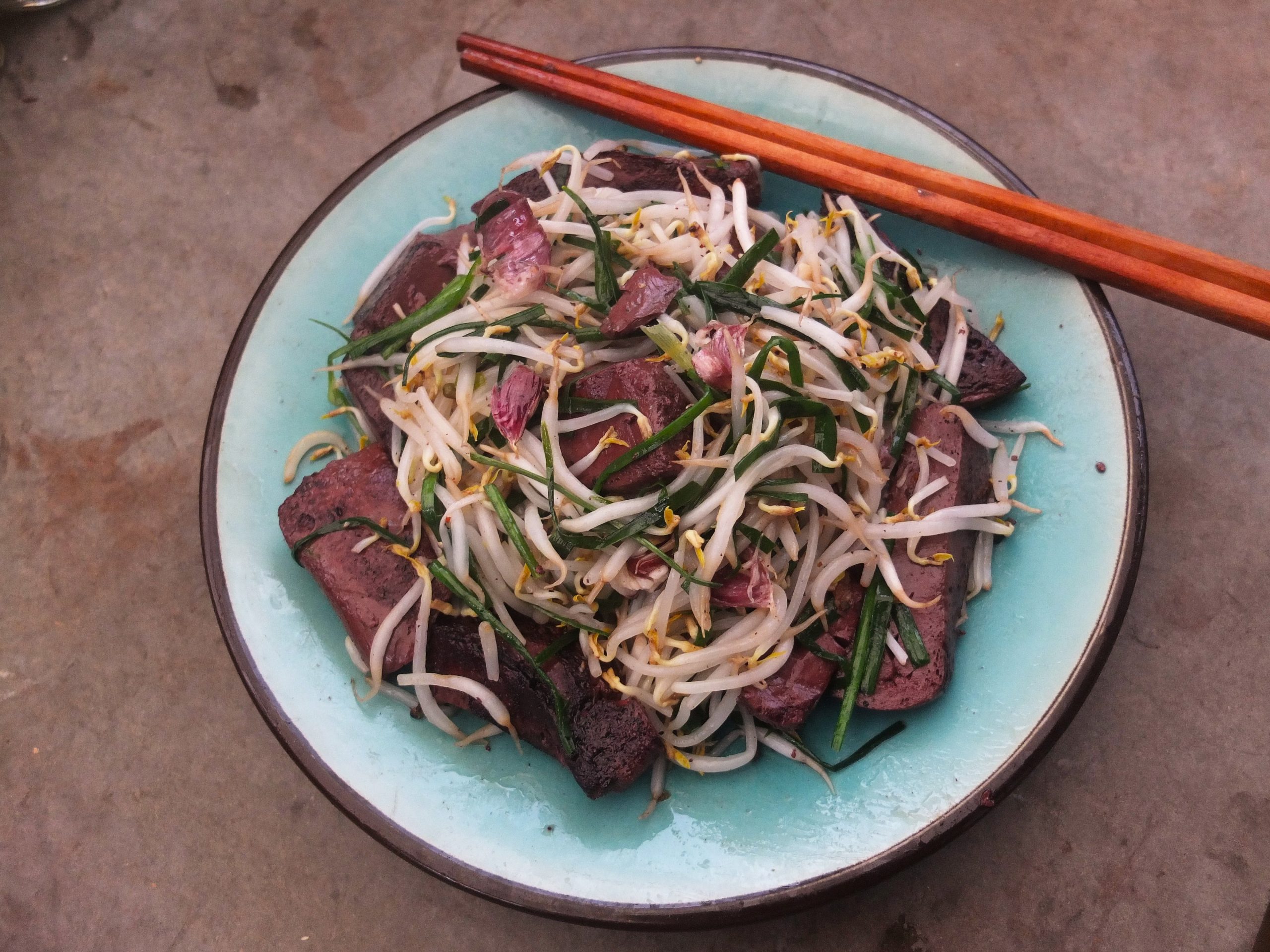
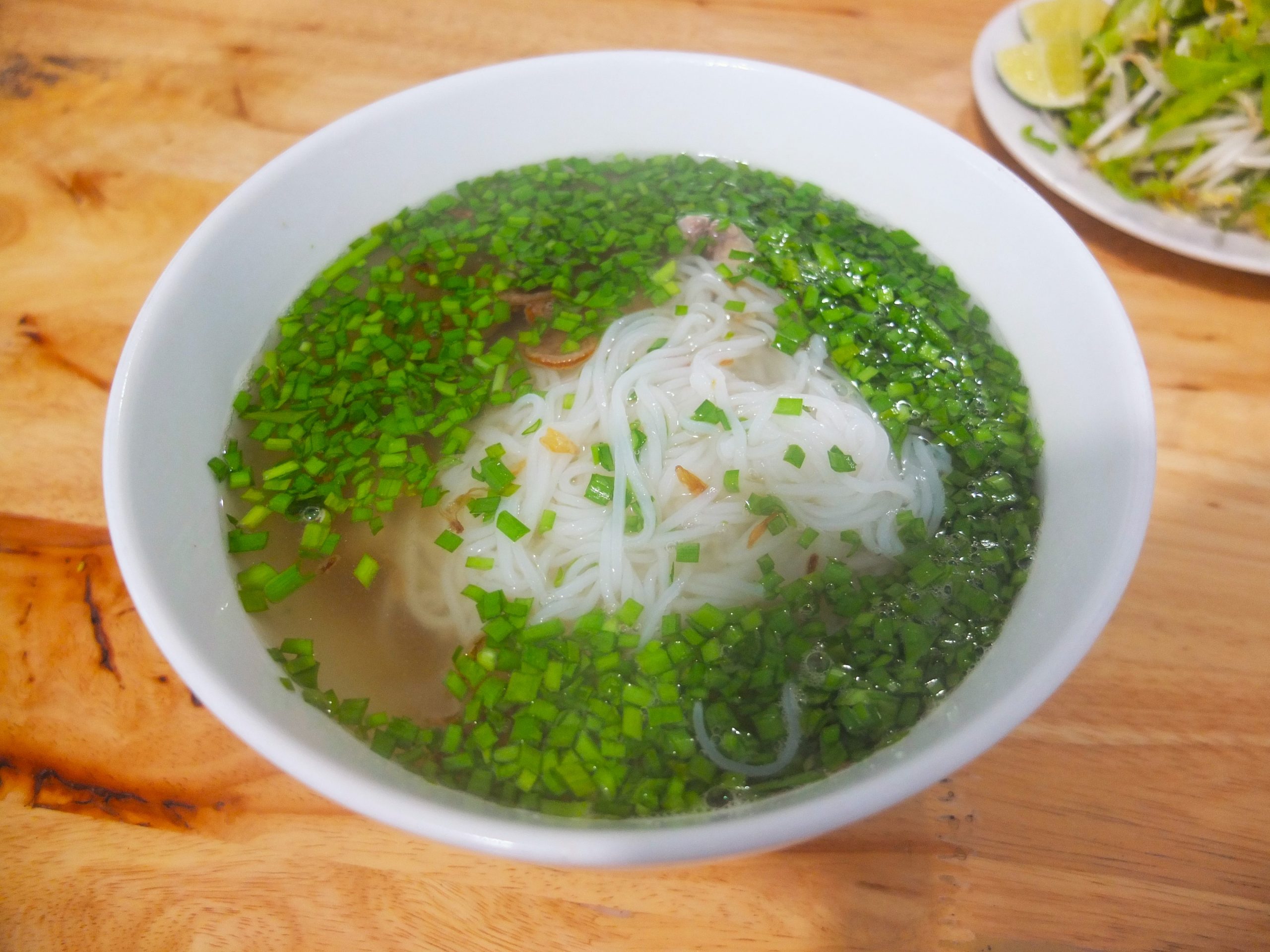
4. Dill (thì là)
One of Hà Nội’s most famous fish dishes – chả cá Lã Vọng – wouldn’t taste the same without dill. When used as an ingredient in a seafood dish, dill not only enhances the taste but also helps lessen the fishy smell. For some reason, dill also goes really well with tomato in soup and makes it a perfect dish for a rainy day. I like using dill in my dishes, especially when making my two favourite soups canh hến thì là (baby clams with dill soup) and canh cà chua trứng thì là (dill and tomato soup with scrambled eggs) which both originated from the north. However, southern people are generally not very fond of dill’s taste in their dishes.
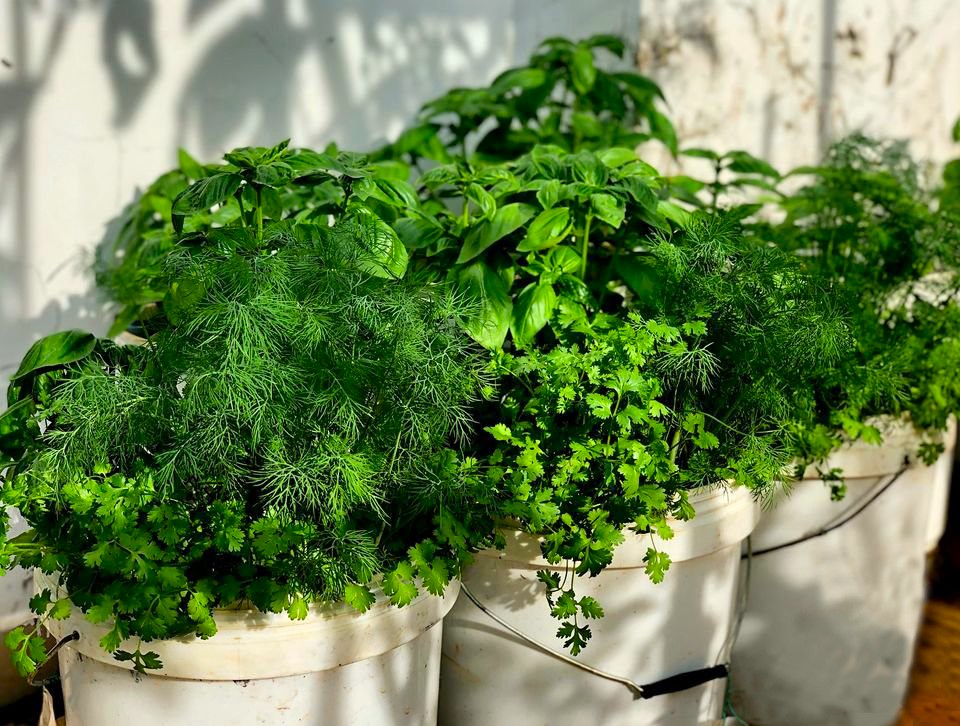
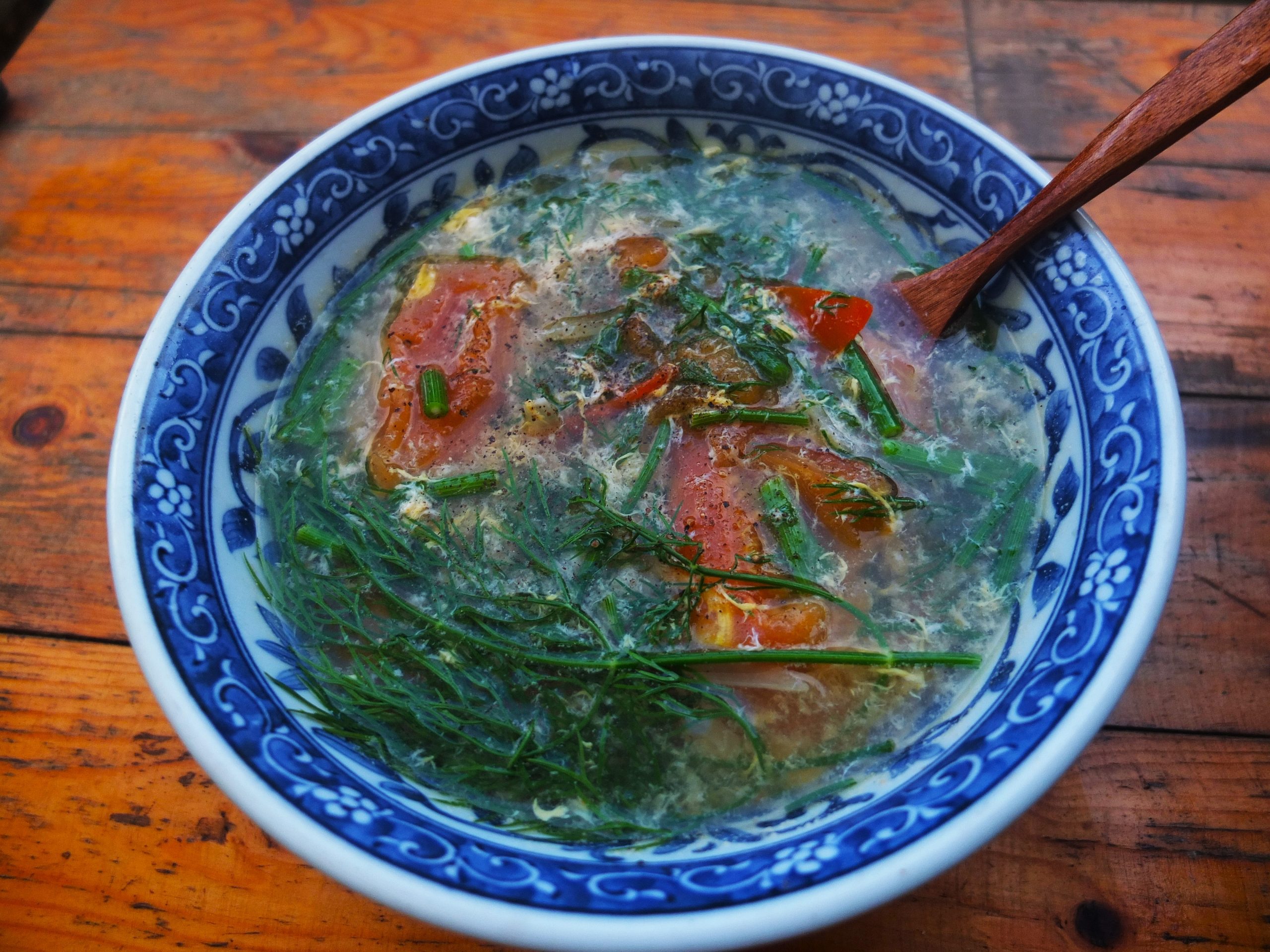
5. Culantro (ngò gai/mùi tàu)
Culantro is also known as sawtooth coriander due to the unique shape of its leaf which resembles the teeth on a two-edged handsaw. This is my favourite herb for canh chua (sweet and sour soup) and canh bí đỏ (pumpkin soup) which are common soups in the south. I love the fragrance of culantro either cooked or eaten raw together with other fresh herbs. In the north, culantro is commonly used in canh măng (bamboo shoot soup) which is usually cooked with duck meat or fish. The herb is also used in traditional remedies for fevers and chills, vomiting and diarrhoea. The leaves and roots are boiled and the water drunk to alleviate the mucus from a bad, chesty cough.
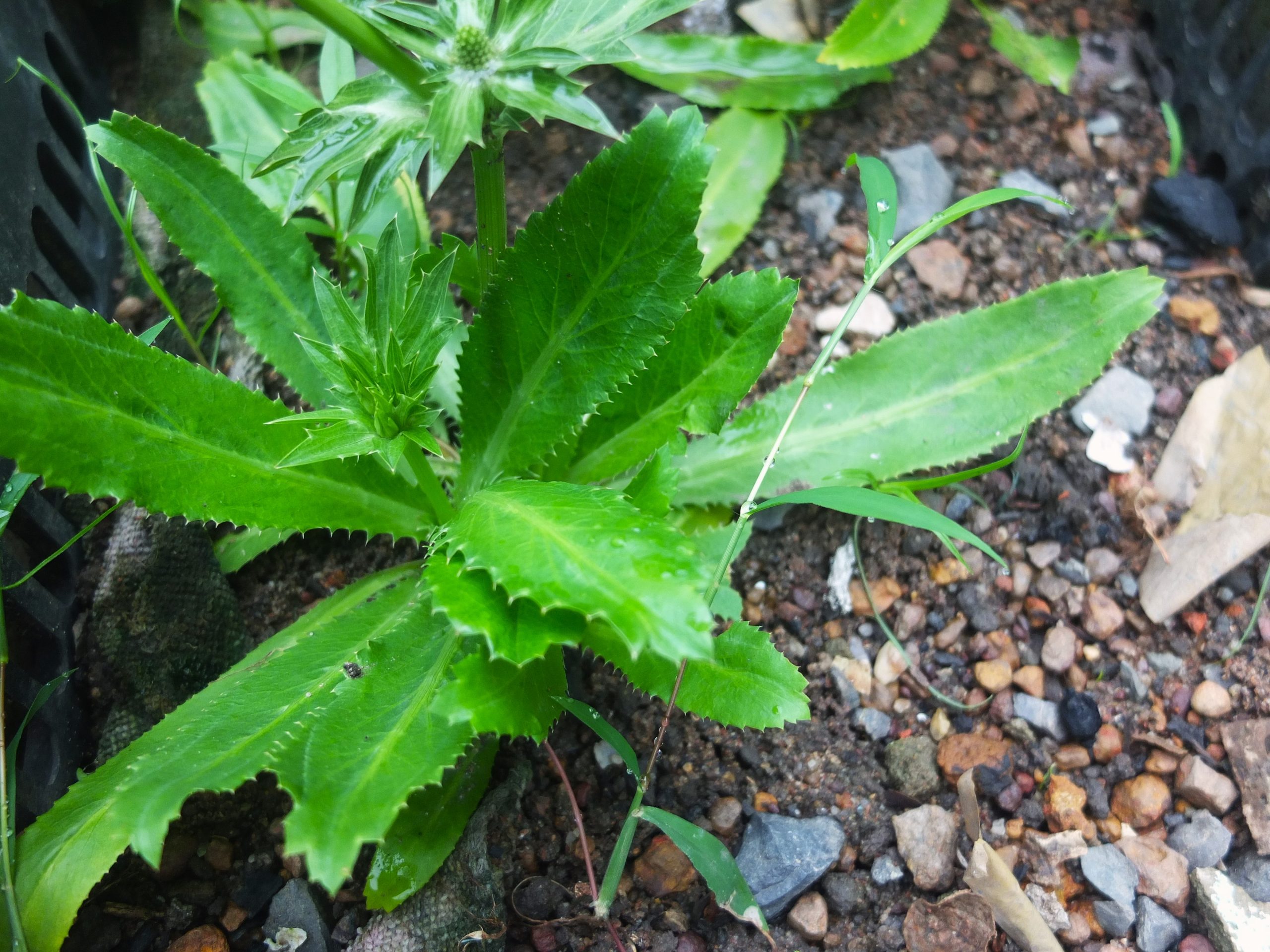

6. Rice Paddy Herb (ngò om/ngổ)
As with spring onion and coriander, rice paddy herb and culantro are often used as ‘a couple’. A bowl of southern canh chua (sweet and sour soup) won’t taste as good without rice paddy herb and culantro. When eating phở or miến gà (glass noodle chicken soup) you will usually be served with a full basket of rice paddy herb, culantro, and Thai basil. Rice paddy herb is very aromatic. However, it also has a bitter flavour, so one might want to opt for culantro in certain dishes where both herbs are used interchangeably. For instance, I prefer to use more rice paddy herb in my canh khoai mỡ (purple yam soup) while others prefer culantro.
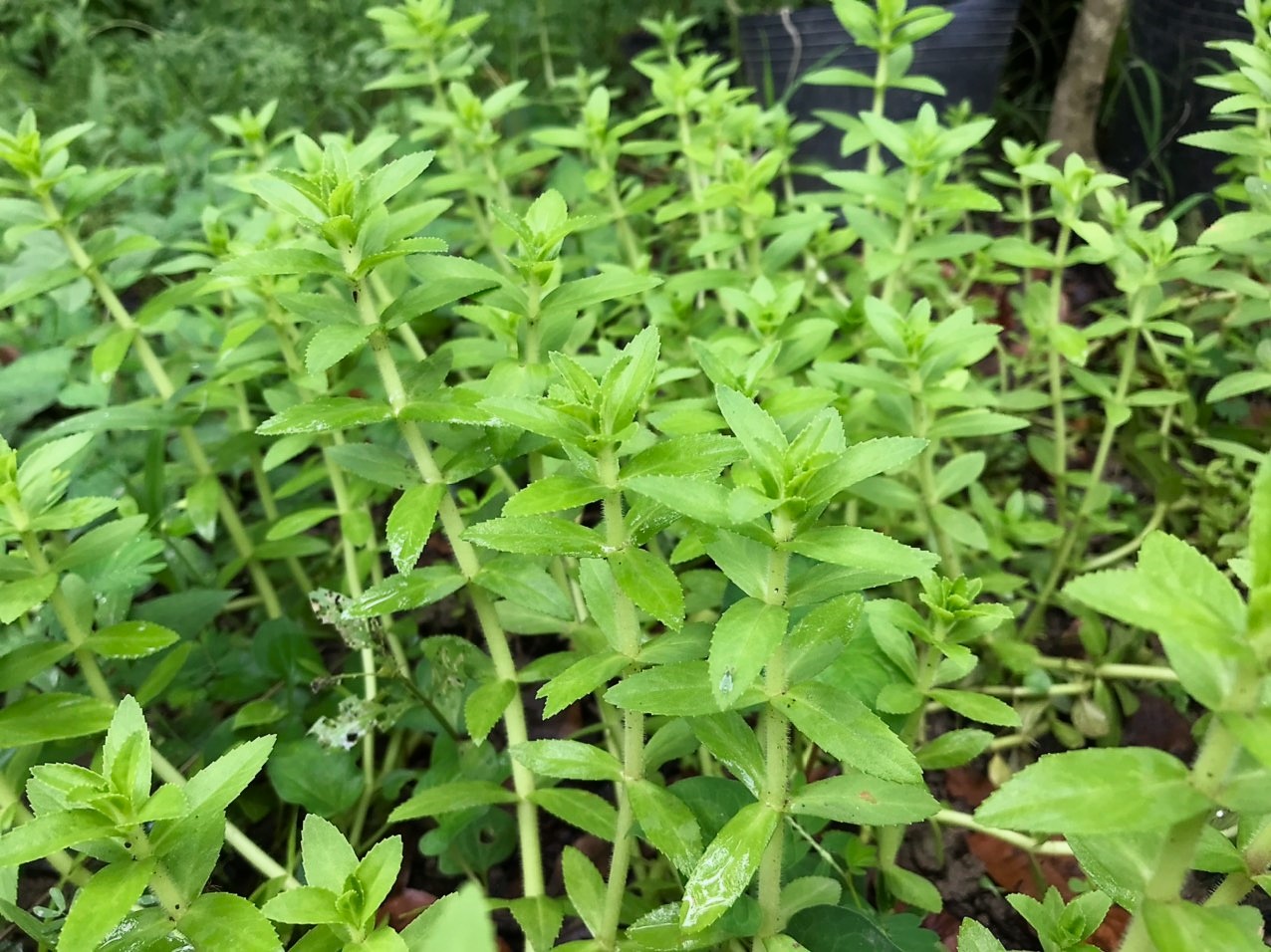
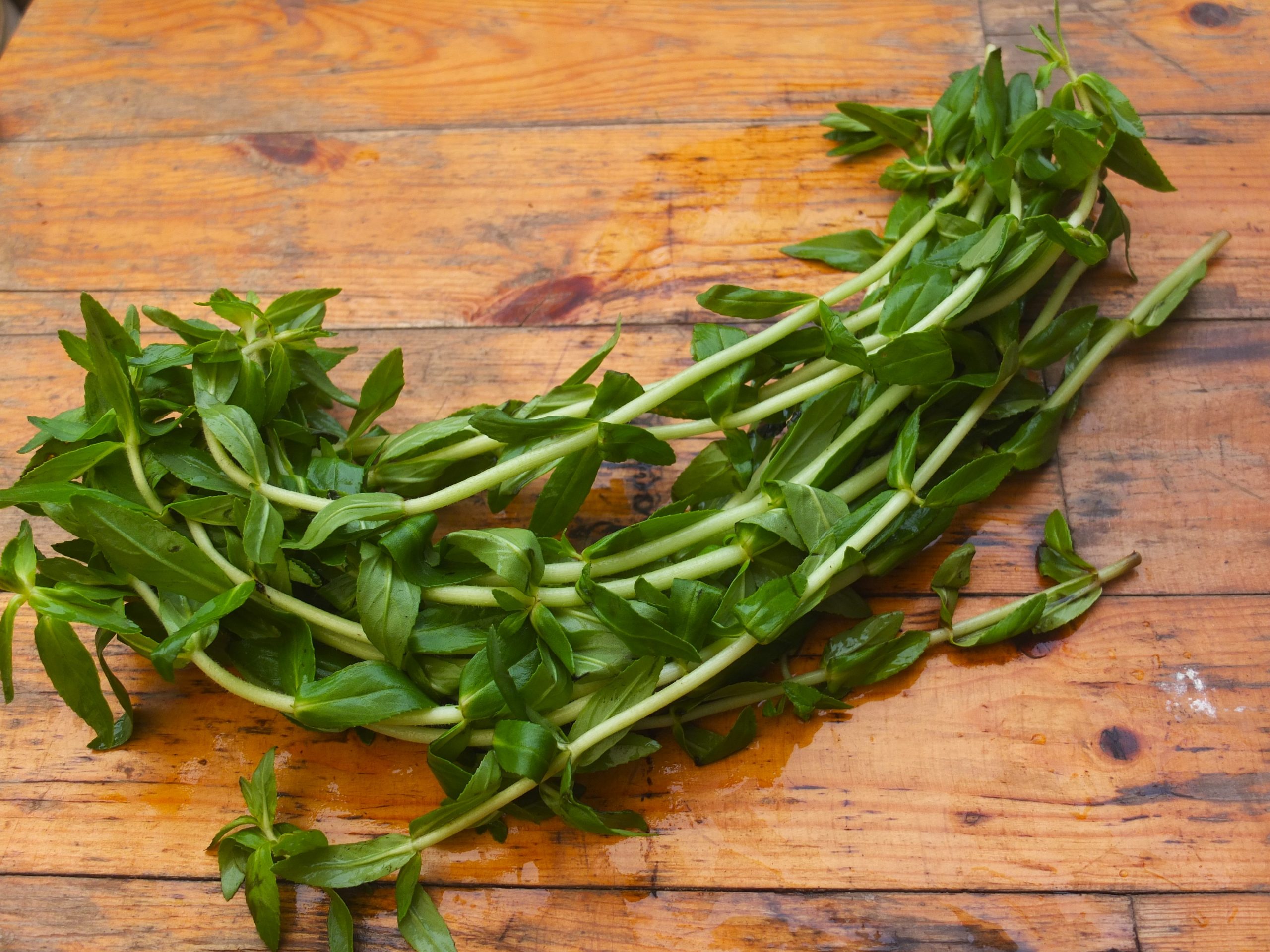
7. Vietnamese Coriander (rau răm)
Try randomly asking a local person which dish they think of when they think of rau răm (Vietnamese coriander) and they will very likely say hột vịt lộn (fetal duck egg). So why eat hột vịt lộn with rau răm and not any other herbs? Once you become familiar with Vietnamese cuisine and the way we combine certain things together when eating or drinking, you will notice a kind of yin-yang balance that we consider key to keeping us healthy. Hột vịt lộn and rau răm is a perfect example for such a combination. Hột vịt lộn is strongly ‘yin’ (cold) while rau răm is strongly ‘yang’ (hot). Having hột vịt lộn with rau răm helps prevent the stomach from getting indigestion or bowel incontinence that one might experience if eating the dish on its own. Because of its cold characteristic, hột vịt lộn is supposed to be consumed in the morning rather than the evening. Indeed, this is generally the case in the north. However, in southern Vietnam we often eat it at nighttime as a late snack. Rau răm is also a great addition when making Vietnamese salads (gỏi or nộm). For example, gỏi gà bắp cải rau răm (chicken salad with cabbage) is one of my favourites.
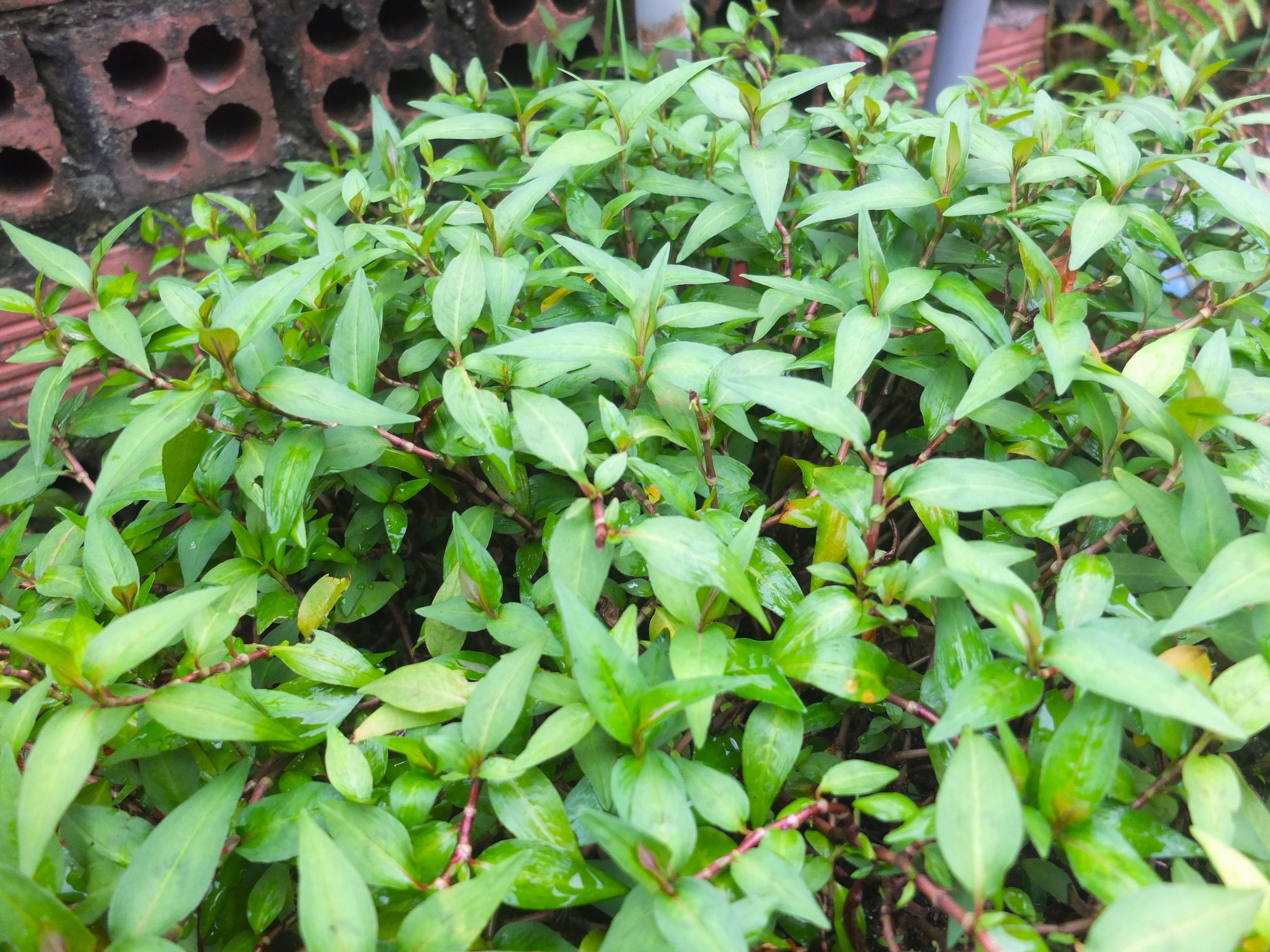

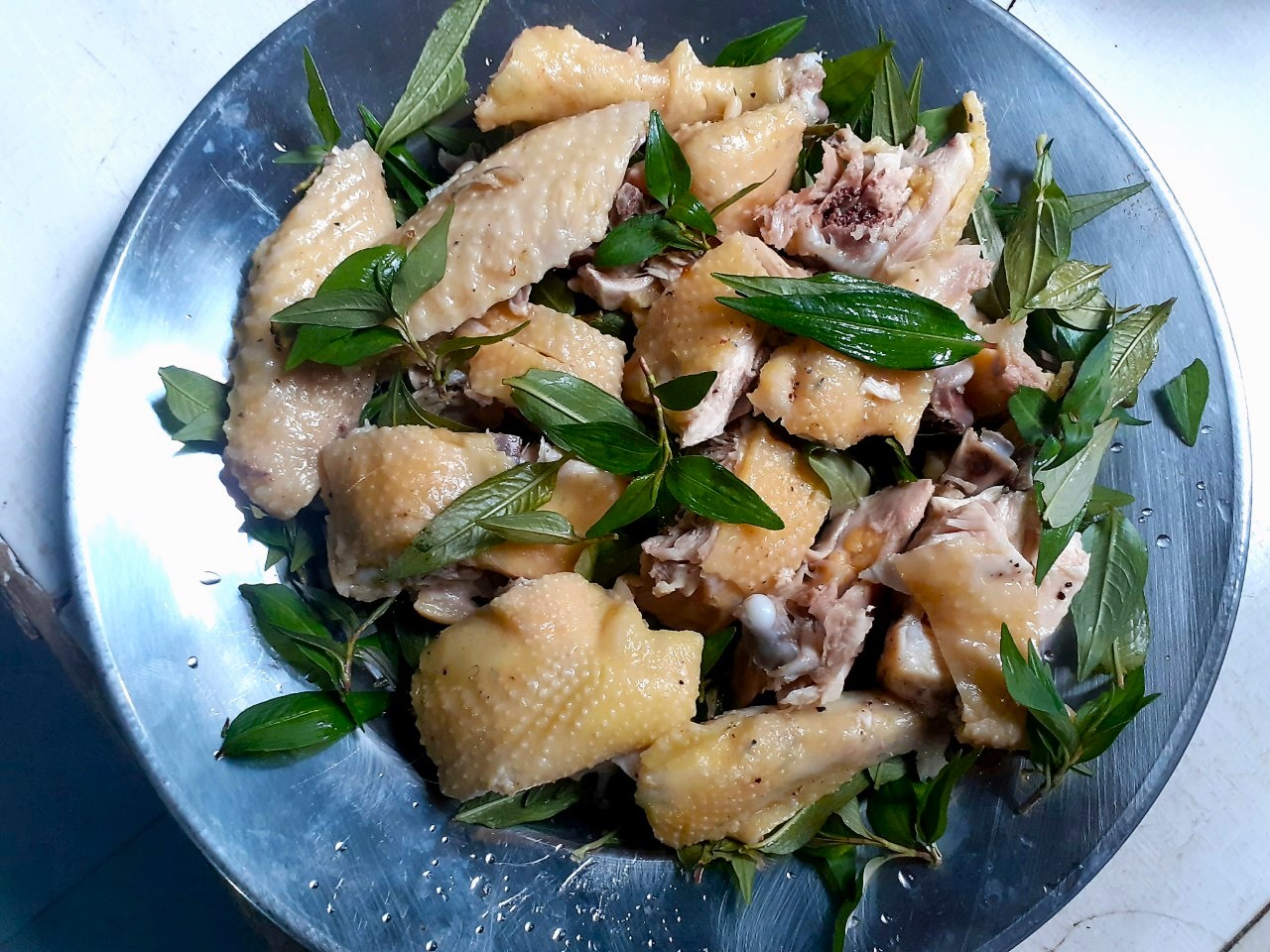
8. Thai Basil (húng quế)
Commonly seen together with other fresh herbs accompanying a bowl of phở or bún bò Huế, Thai basil is also used as an ingredient in making soups or stir-fried dishes. The most common Thai basil has purple stems and purple flowers, and should not be mistaken with its family member húng quế trắng or é trắng (lime basil), which has light green stems and white flowers, and grows more in central and highland regions of Vietnam. Lẩu gà lá é (chicken hotpot with lime basil) is currently a popular dish in many parts of the nation, originally a specialty of Phú Yên Province, in Central Vietnam. In some places in Sài Gòn, you will find a version of this dish but using Thai basil: lẩu gà lá quế. Personally, I prefer the latter for its aroma, even though the taste of the chicken broth in both versions is pretty much the same.
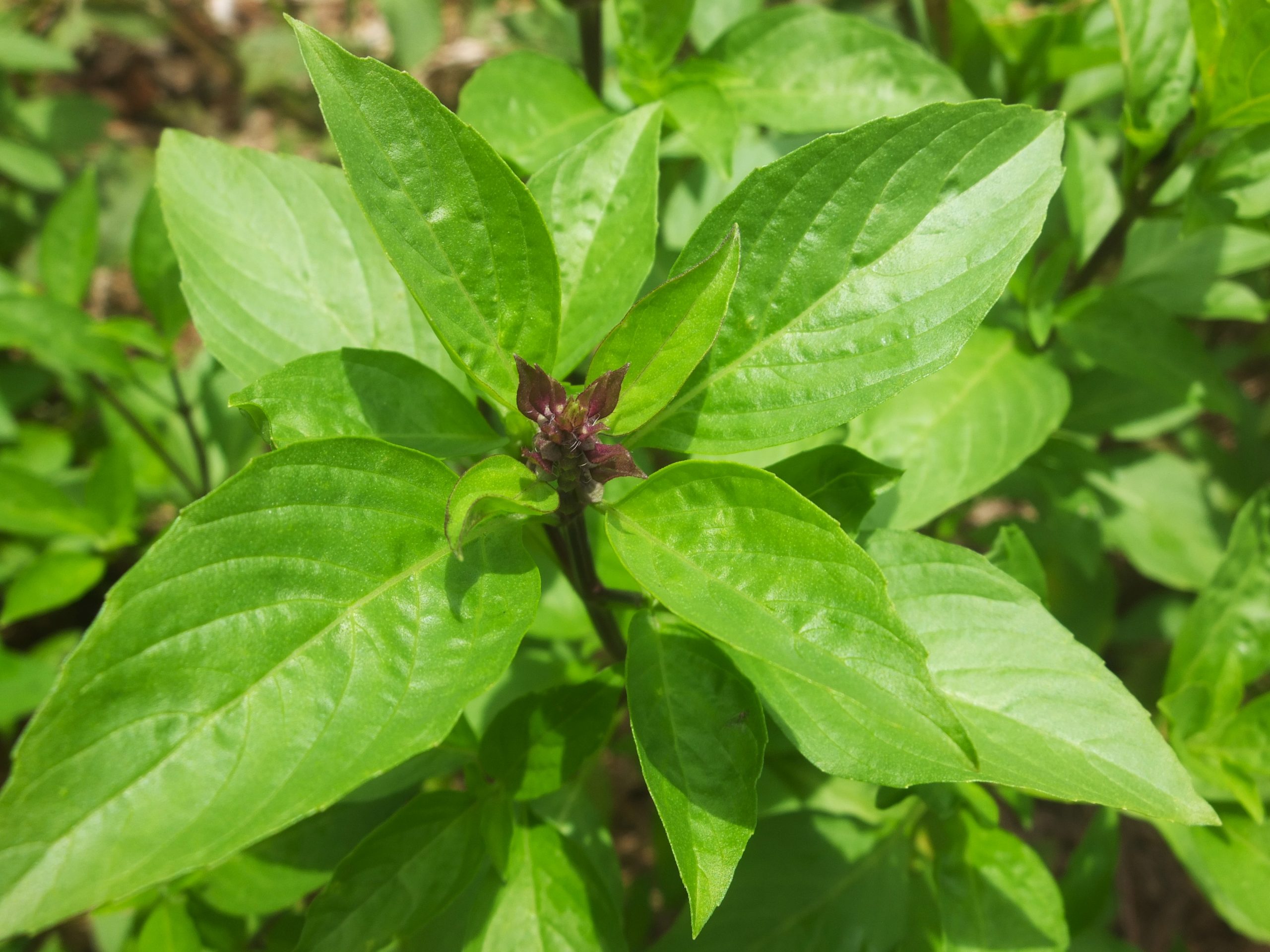
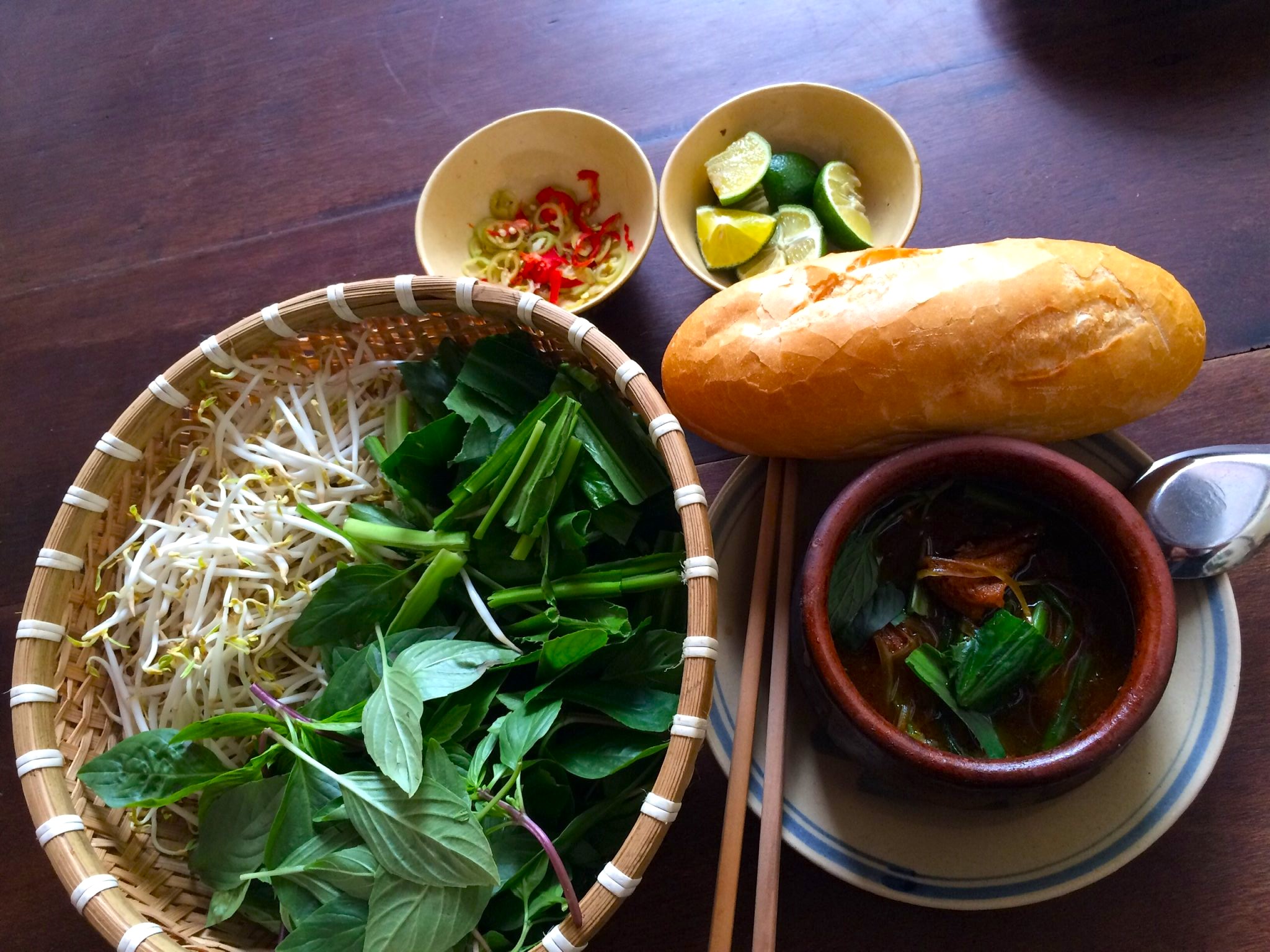
9. Perilla Leaf (tía tô)
Perilla leaf is widely used across the country as an addition to a mix of fresh herbs to make fresh spring rolls (gỏi cuốn), or to add into a bowl of noodle soup, or simply eaten raw by dipping into a savoury sauce. Whenever I catch a cold, I will make myself a bowl of rice porridge (cháo) with lots of perilla leaves, spring onions and crushed black pepper. That’s my folk medicine and it tastes great as well! My other favourite use for perilla leaf is to make a beautiful pink-coloured drink by boiling the leaves with or without rock sugar, letting it cool down then adding lime juice and ice. It’s a great drink for a hot day and it’s believed to have many health benefits.
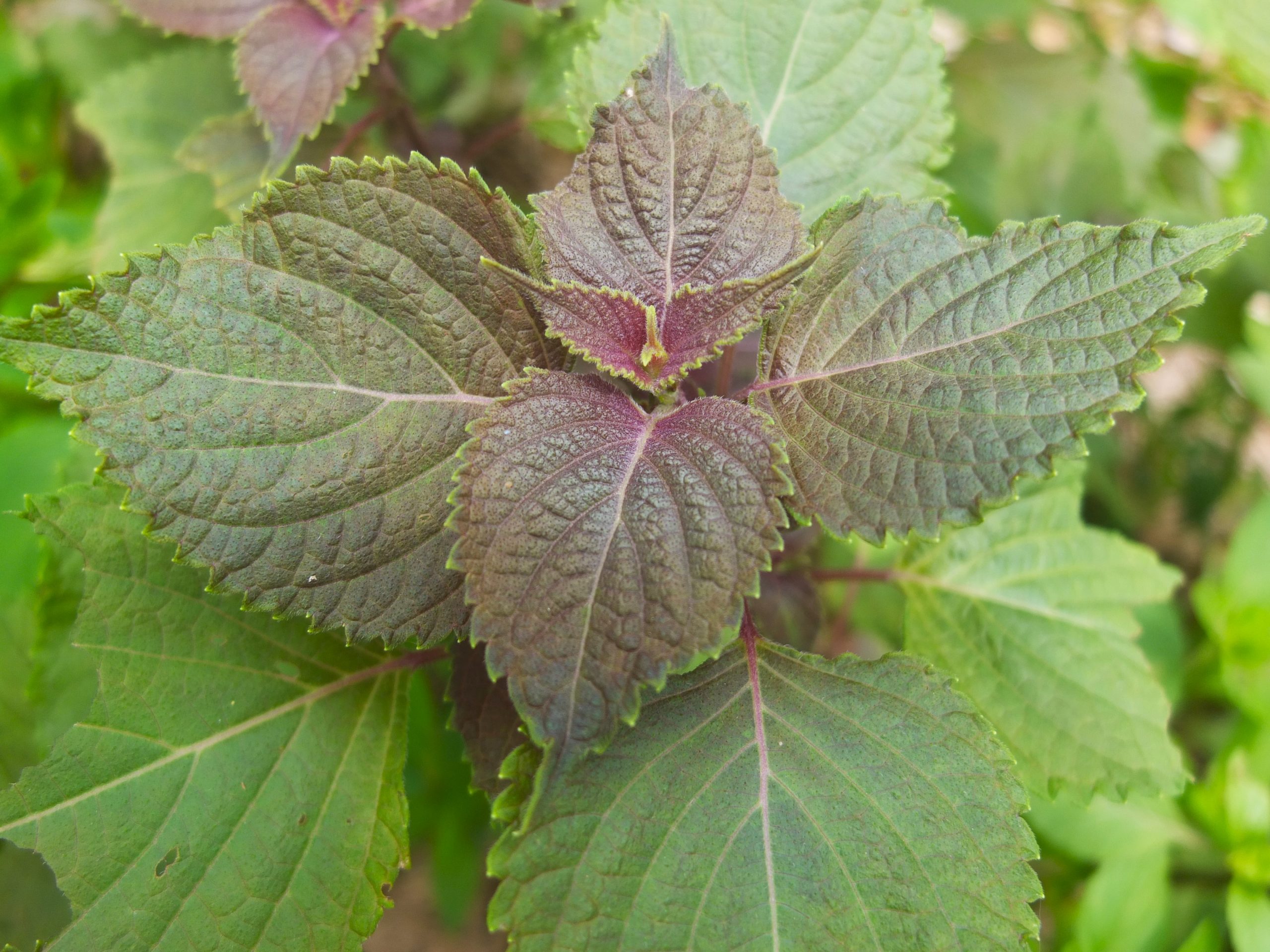
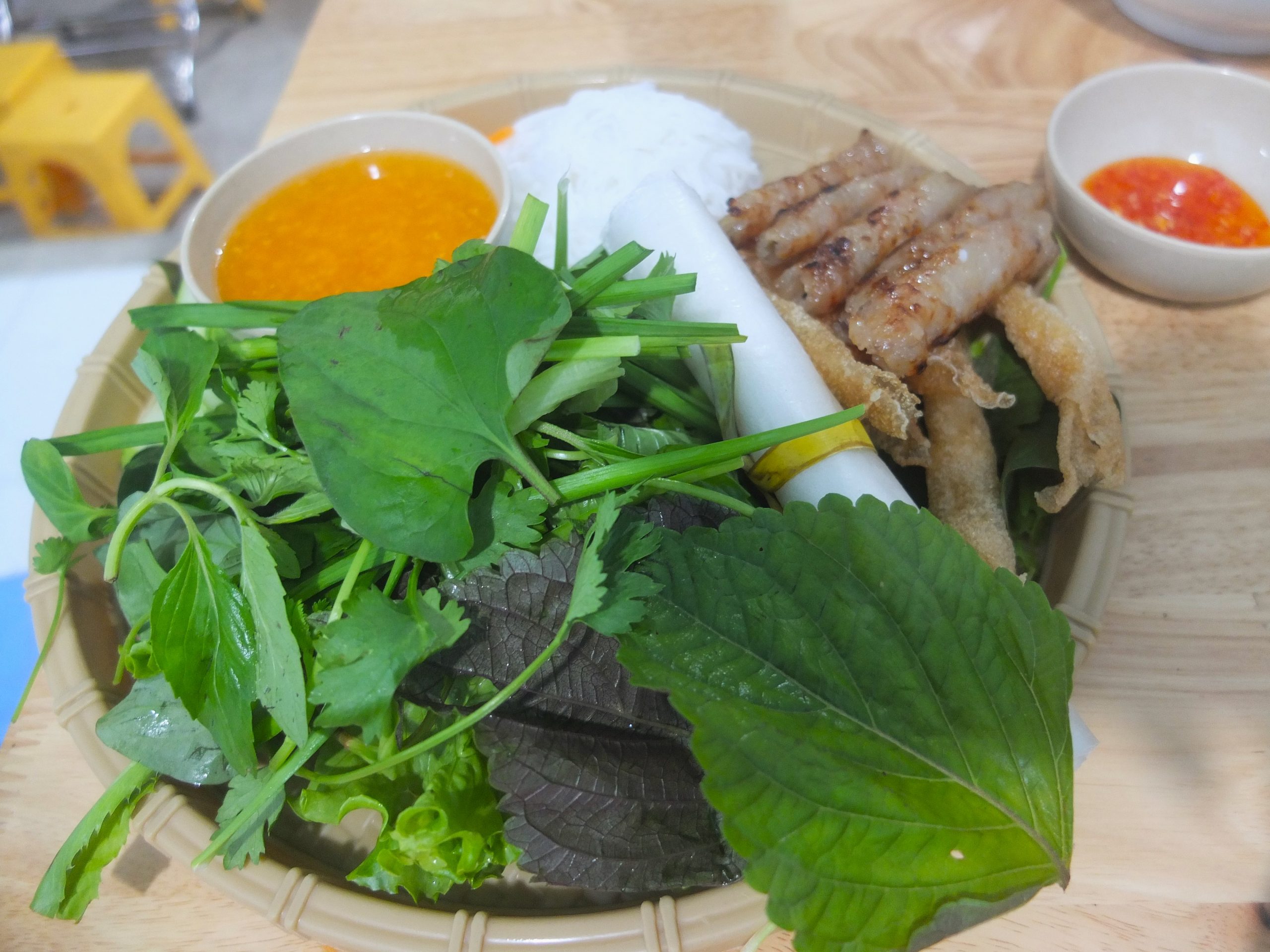
10. Vietnamese Balm (kinh giới)
Foreigners tend to mistake Vietnamese balm for lemon balm due to its similar appearance. Vietnamese balm does have a bit of a lemony tang to it, but it’s not as strong as lemon balm. It’s often served fresh together with perilla leaves in popular northern dishes, such as bún đậu mắm tôm (rice vermicelli with fried tofu and shrimp paste), bún chả Hà Nội (Hanoi-style grilled pork with rice noodles) and bún riêu cua (crab rice noodle soup). Vietnamese balm is a very fragrant herb.
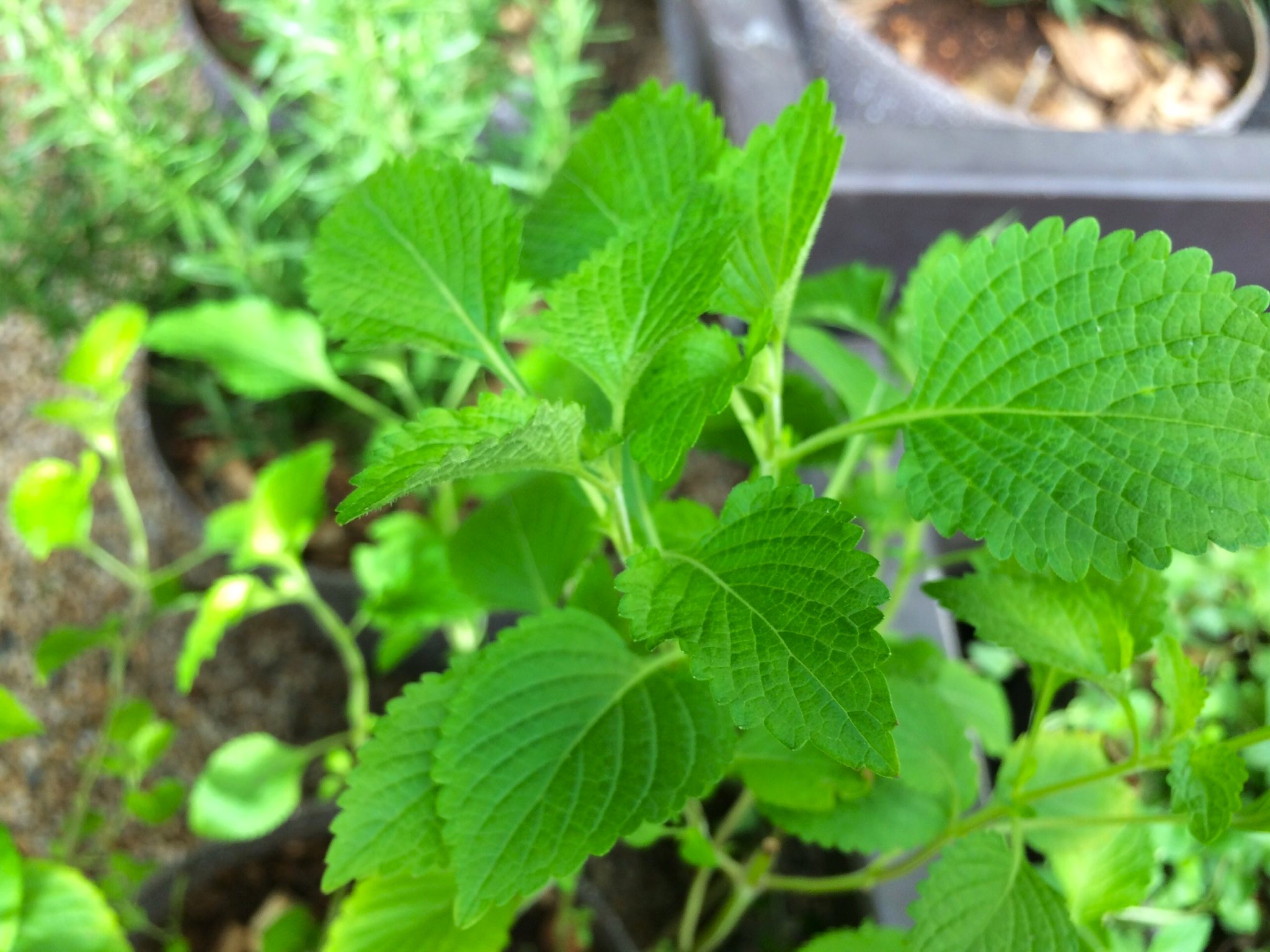

11. Wild Mint (húng cây)
This is my favourite herb for eating raw. In the south, húng cây together with Thai basil are often served with phở, bò kho (beef stew) and cà ri gà (chicken curry). However, you will normally see húng cây mixed with other herbs and salad greens to serve with bánh xèo (Vietnamese pancake) or bánh tráng cuốn (fresh spring rolls). Húng cây has a light, minty, cleansing flavour.
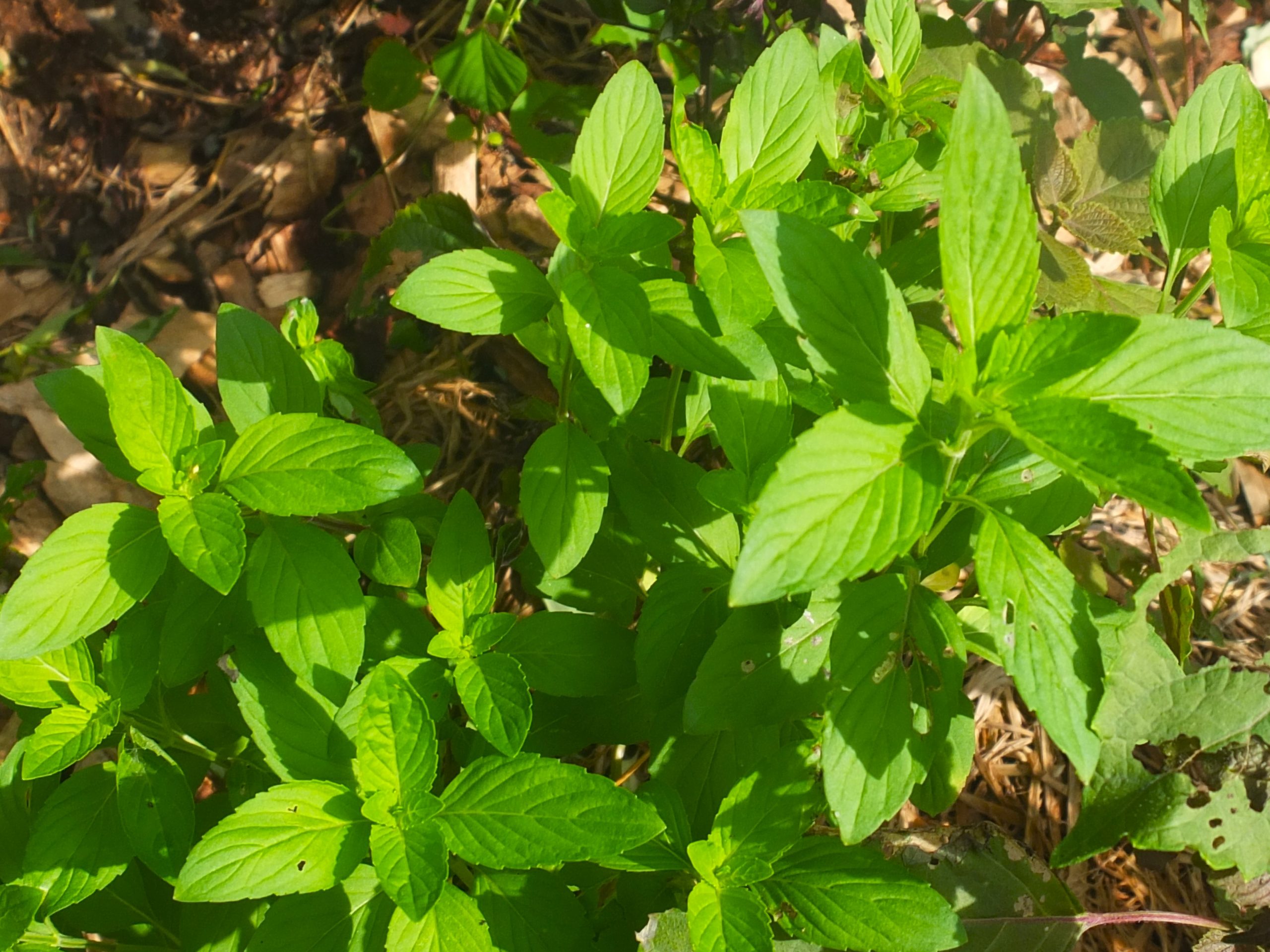
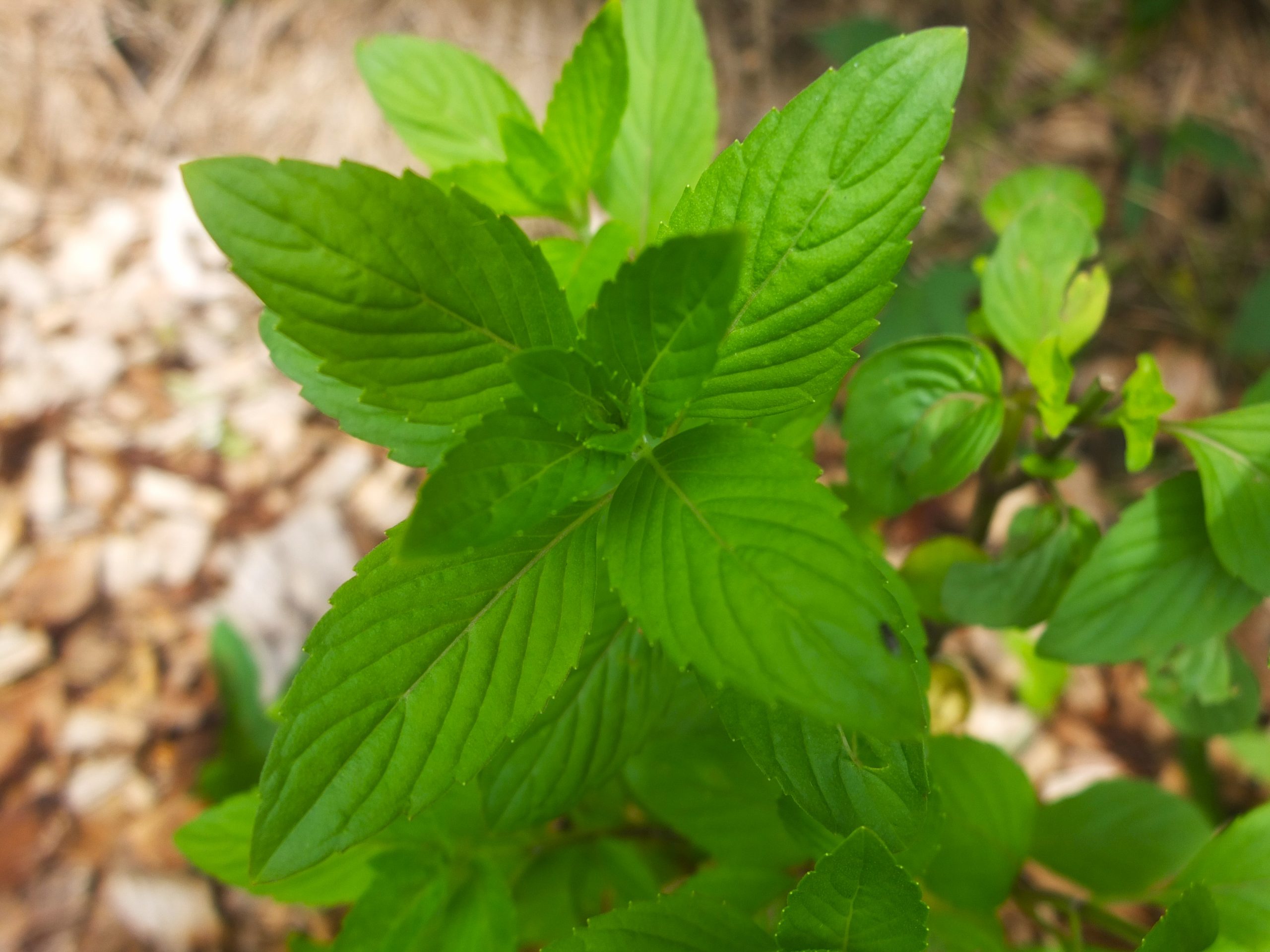
12. Mojito Mint (húng lủi)
Húng lủi is more than just a decorative herb in your glass of Mojito or on top of a dessert cake. Similar to húng cây, it is often mixed with other herbs and vegetables to serve with different dishes. For instance, a bowl of mì quảng (a noodle dish popular in the central provinces) won’t be complete without the addition of húng lủi which gives the dish a refreshing flavour to balance the richness of its other components. However, my favourite use of húng lủi is to add it to pomelo salad (gỏi bưởi) and green papaya salad (gỏi đu đủ). Húng lủi has a small and delicate leaf and a mild yet distinctive minty flavour.
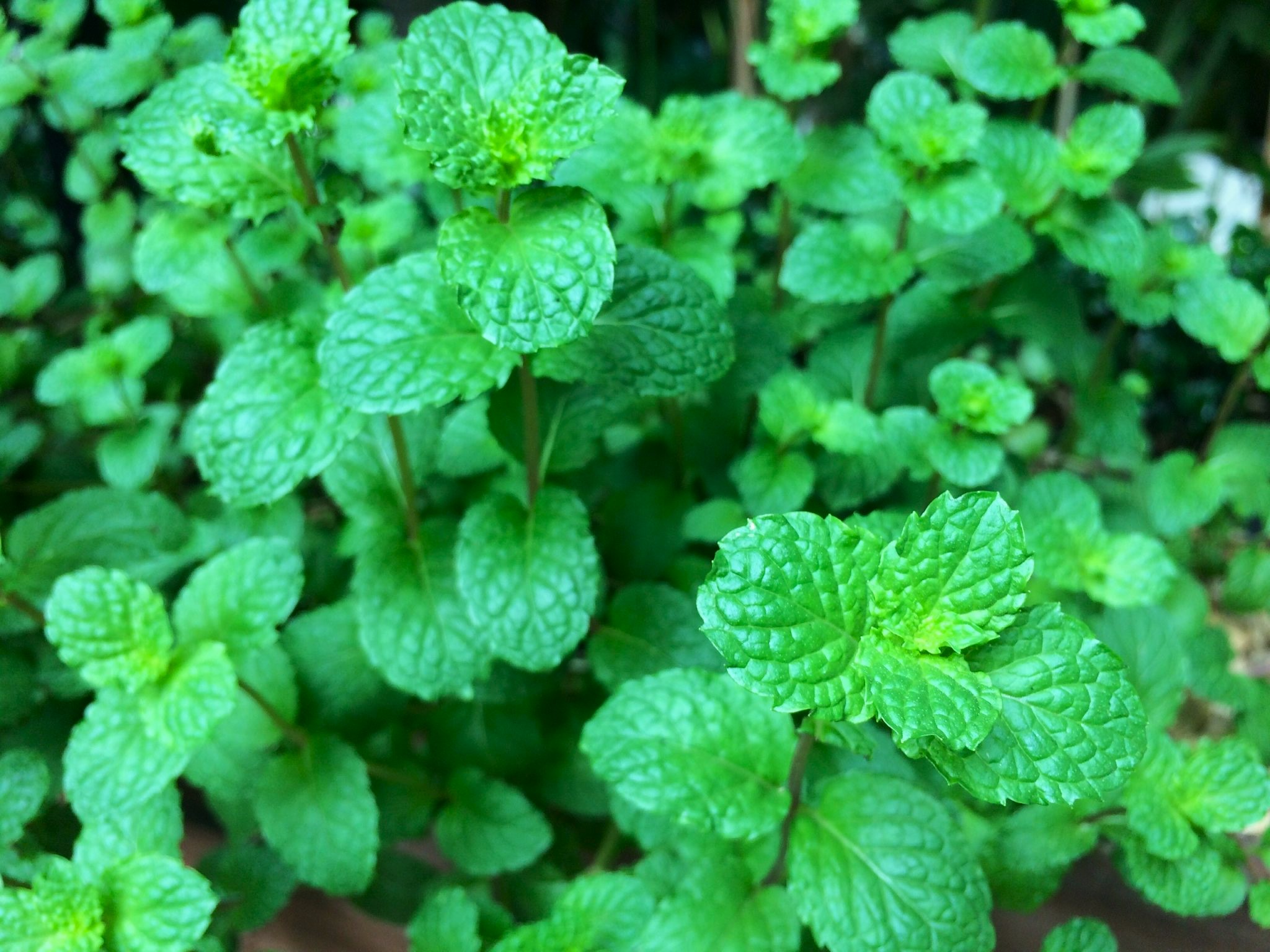
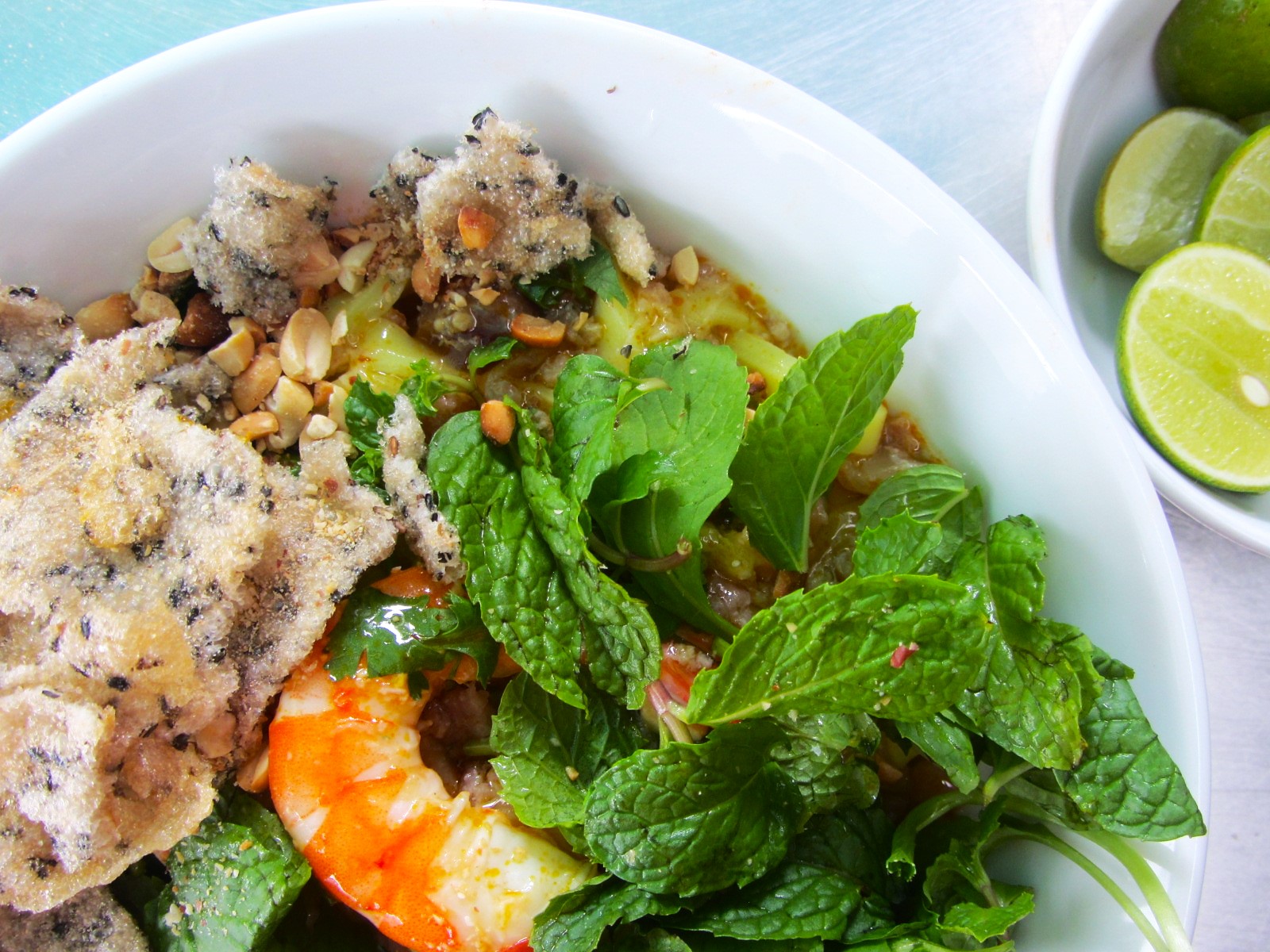
13. Fish Mint (diếp cá)
Of all the herbs listed on this page, diếp cá might be the one that both foreigners and many Vietnamese people find hard to like due to its unique flavour. In Vietnamese, when describing a taste or smell that is pungent, we often associate it with the taste/smell of fish: this is how diếp cá (fish mint) got its name. However, I think it’s a misnomer, because the flavour is nowhere near as ‘fishy’ as most people think. Regardless of the taste, fish mint is considered one of the healthiest herbs to consume on a daily basis. We generally eat fish mint raw especially when having bánh xèo (Vietnamese savoury pancake) or dip it together with other herbs in nước cá kho (stewed fish broth) or nước thịt kho (stewed pork broth). Due to its many health benefits (internal cleansing, controlling blood sugar level, improving the respiratory system and boosting the immune system, to name just a few), fish mint is also used to make juice for detox drinks.
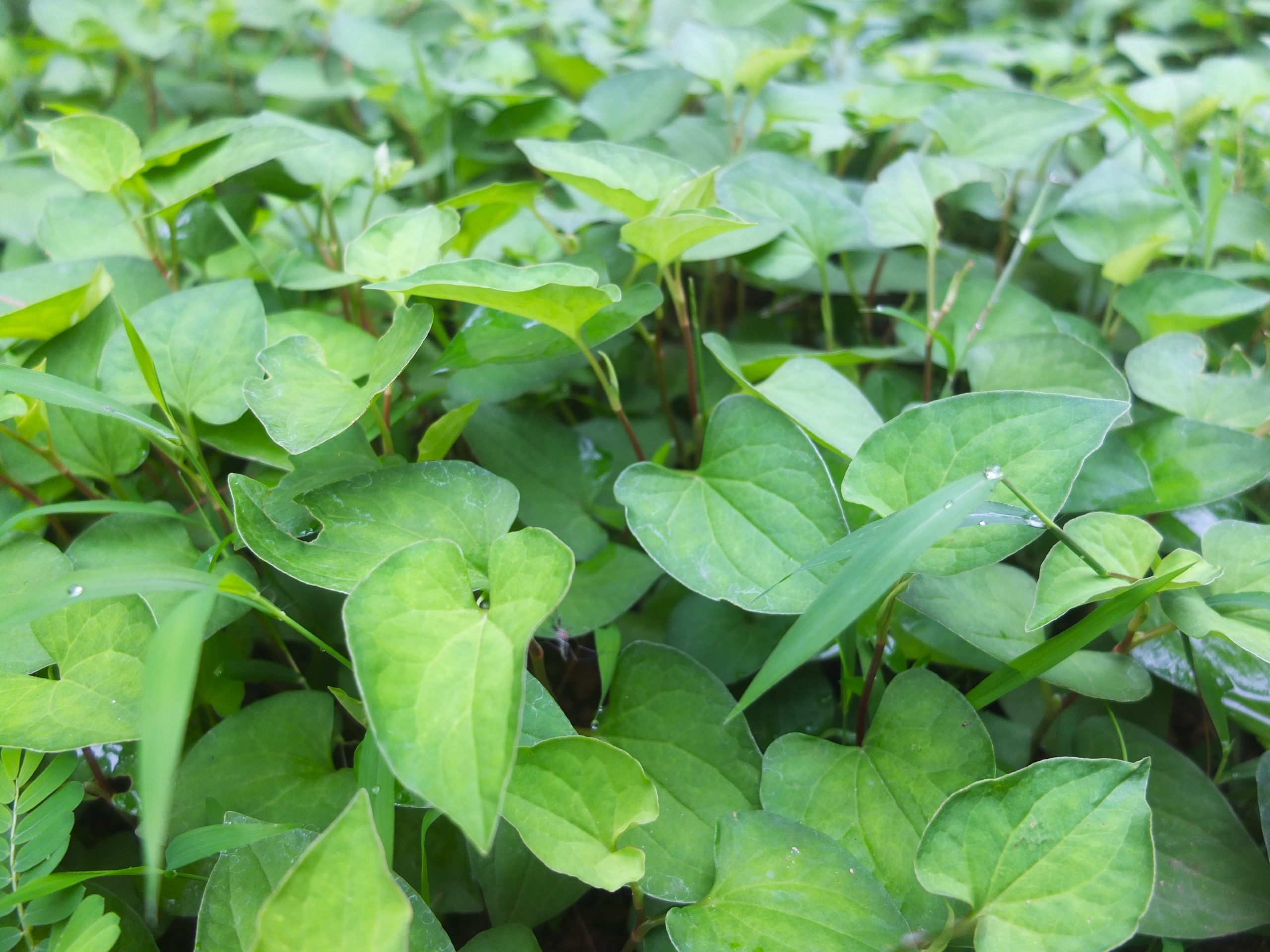
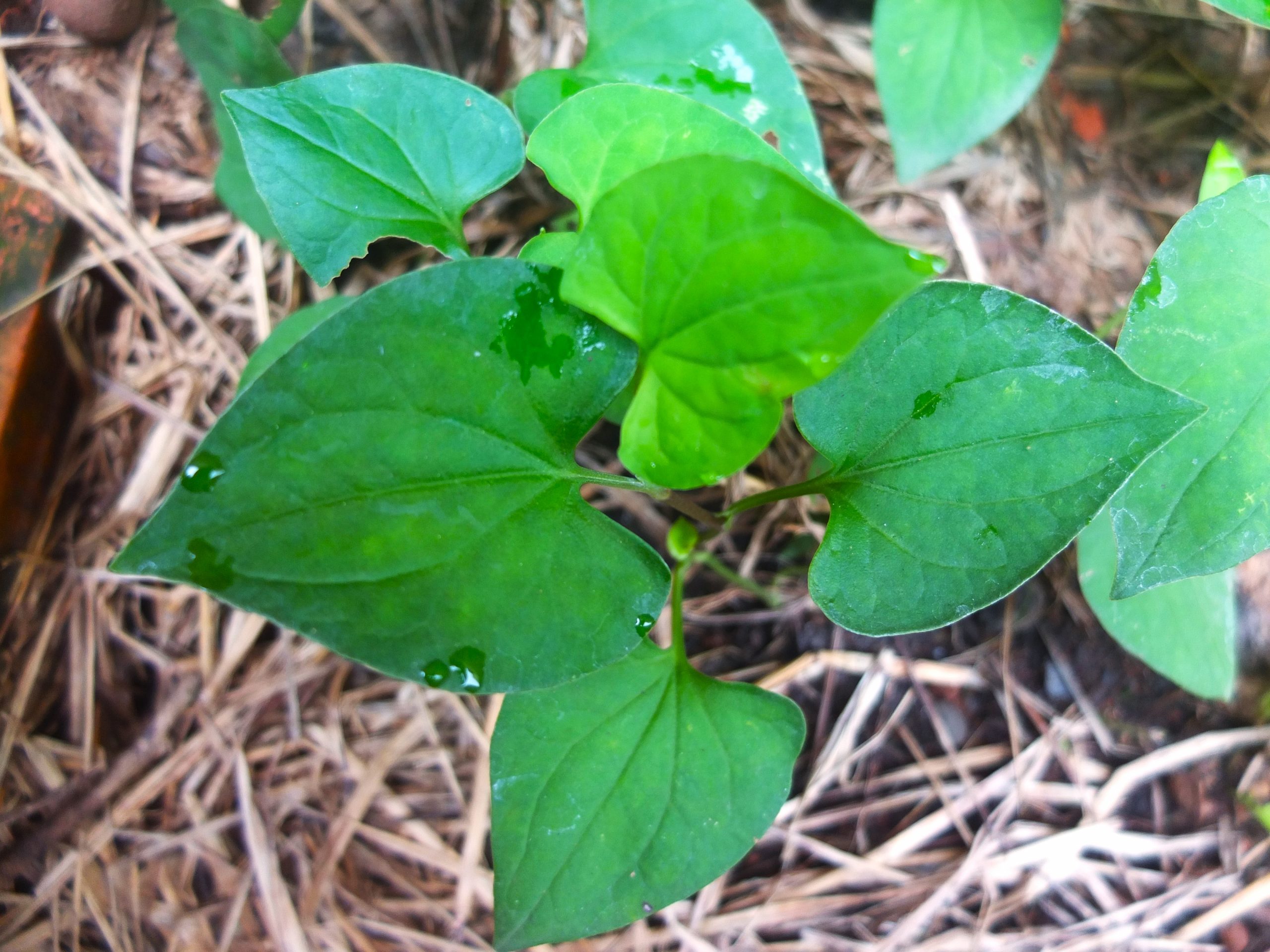
14. Garlic (tỏi)
Although garlic is a spice that’s used around the world, the way Vietnamese people cook and use garlic is, in my opinion, on another level. Vietnamese garlic varieties are often smaller than the Chinese ones which are more popular in the West. To local people, the best garlic variety (also the most expensive) is the tiny garlic bulbs that come from the volcanic island of Lý Sơn off the coast of Central Vietnam. Its most nutritious and sought-after version is tỏi cô đơn (single-clove garlic). I once asked my friend’s mum, who lives on Lý Sơn, what makes the island’s garlic more aromatic and have a stronger, spicier flavour than the rest of the garlic in the country. She said the secret was the volcanic soil (which contains lots of minerals) covered with a thick layer of coral sand which not only makes the growing medium more porous, but also helps keep the moisture in the soil and prevent the garlic from being overheated by the strong sunlight on the island.
In Vietnam, we hardly ever use garlic powder in our cooking; only fresh cloves of garlic that are sometimes left unpeeled (perhaps we’re lazy to peel them because the cloves are so small). Almost everything stir-fried is with garlic, from cơm chiên (fried rice) to mì xào and rau xào (stir-fried noodles and vegetables). Fresh finely chopped garlic is often seen with cut chillies in a little bowl of fish sauce or soy sauce to serve as a dip with main dishes. Pickled garlic is also available as a condiment when having noodle soups in local restaurants. Garlic is also a key ingredient for some folk remedies. I remember when I was a child, my mum used to make garlic juice mixed with honey for me to drink whenever I had a cough.
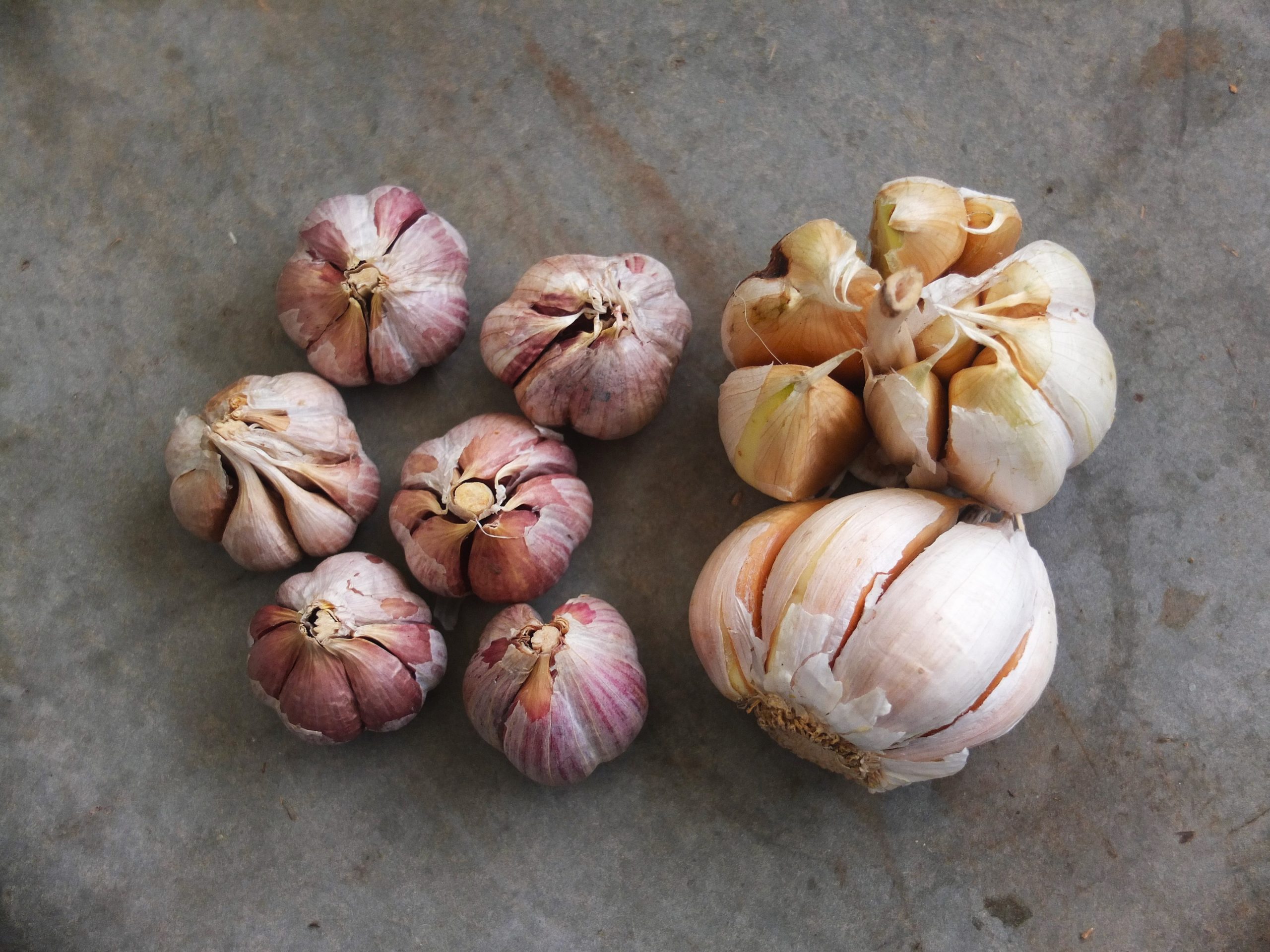
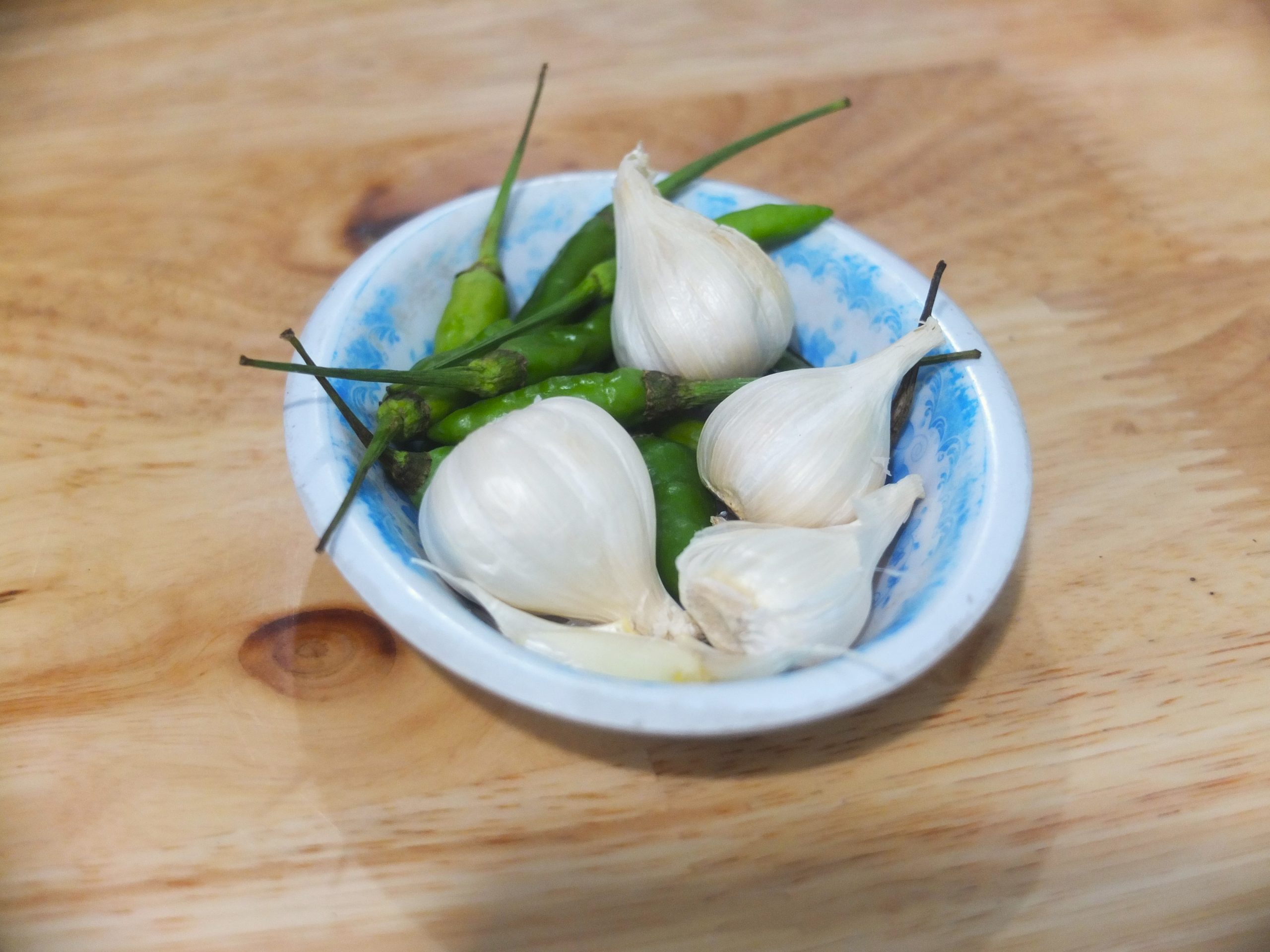
15. Shallot (củ hành tím)
If I run out of garlic for a stir-fried dish, I will use shallot as an alternative. Shallot has a milder flavour than garlic. To enhance the fragrance, we sometimes mix minced garlic and shallot together in certain dishes, especially when the cooking involves meat as a main ingredient. Slices of toasted shallot are commonly used as a garnish for salads, or bánh cuốn (steamed rice paper rolls), or rice porridge (cháo). Similar to garlic, pickled shallot is also used as a condiment, but is more common in noodle soup restaurants in the northern provinces.
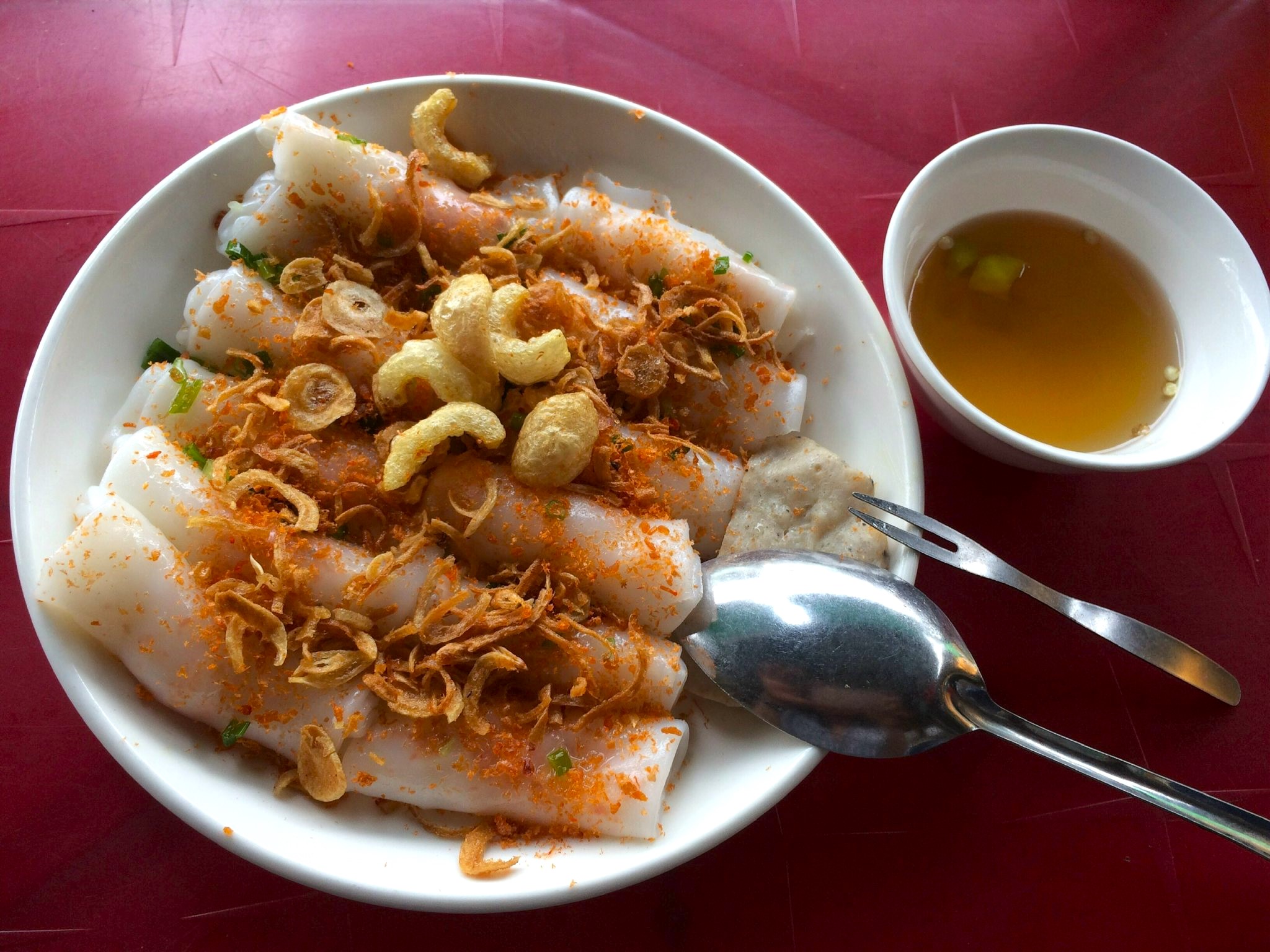

16. Ginger (gừng)
Ginger is widely used across the country, however, in my opinion, it’s more popular in the south compared to the rest of the nation. Though wild ginger is often seen growing in mountainous areas of Central Vietnam and in natural forests all over the country (I recently saw it growing in Côn Đảo national park while trekking through the forest), this type is not used for cooking but rather for medicinal purposes.
I love ginger so much that wherever I’m living in Sài Gòn (I’ve stayed in different districts over the last 15 years), I always grow ginger, either in a container on a balcony or directly in the ground if I have access to a garden. Ginger is a fundamental ingredient in many classic home-cooked dishes, such as chicken, duck or fish stew with ginger (gà/vịt/cá kho gừng).
When it comes to home remedies and healthy drinks, ginger is perhaps the most handy spice to have in the kitchen. A hot cup of ginger tea with honey works great when you have a cold or sore throat. I also like to add fresh ginger to my homemade kombucha, but my favourite flavour is a combination of ginger and pineapple.
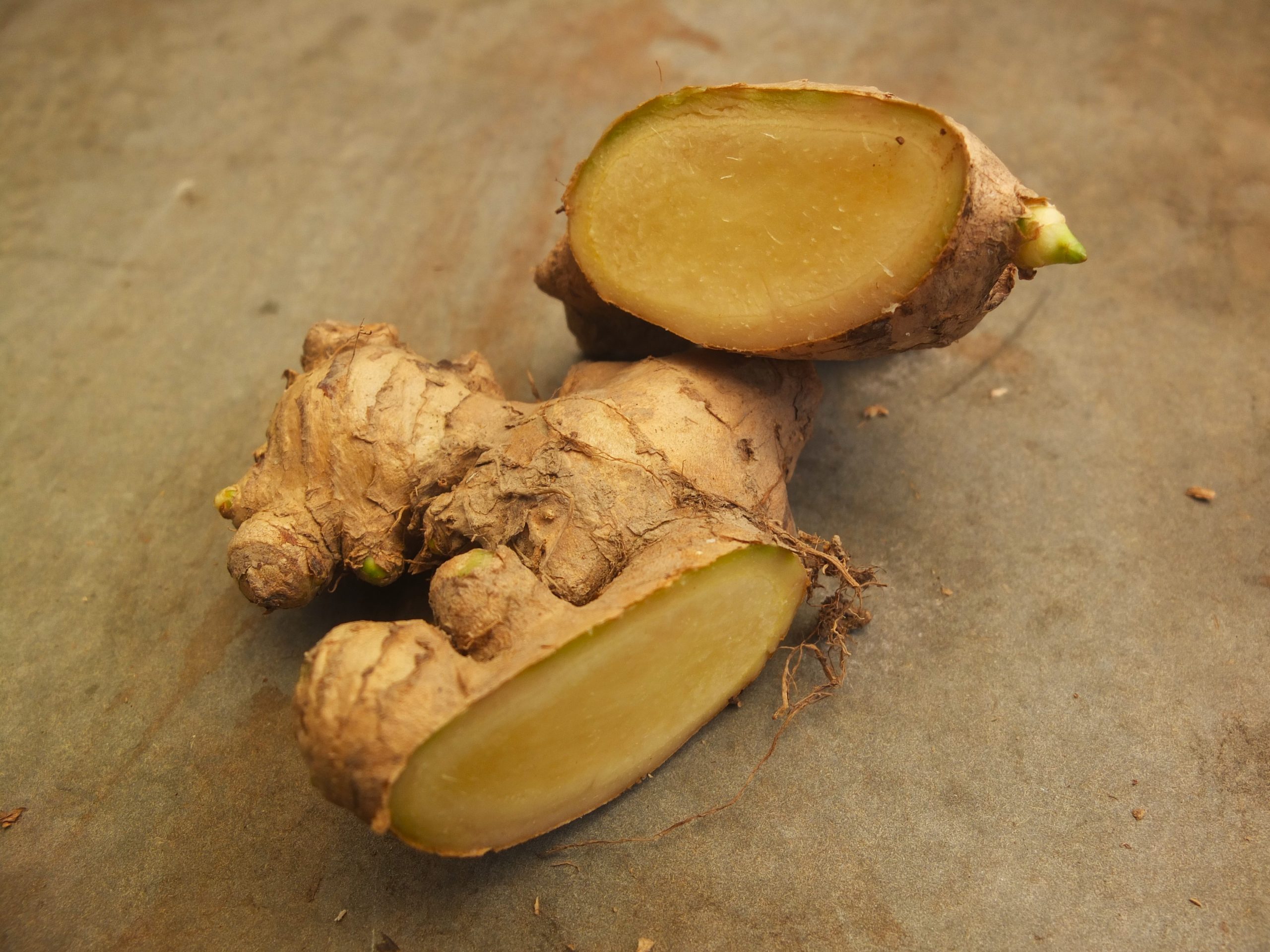
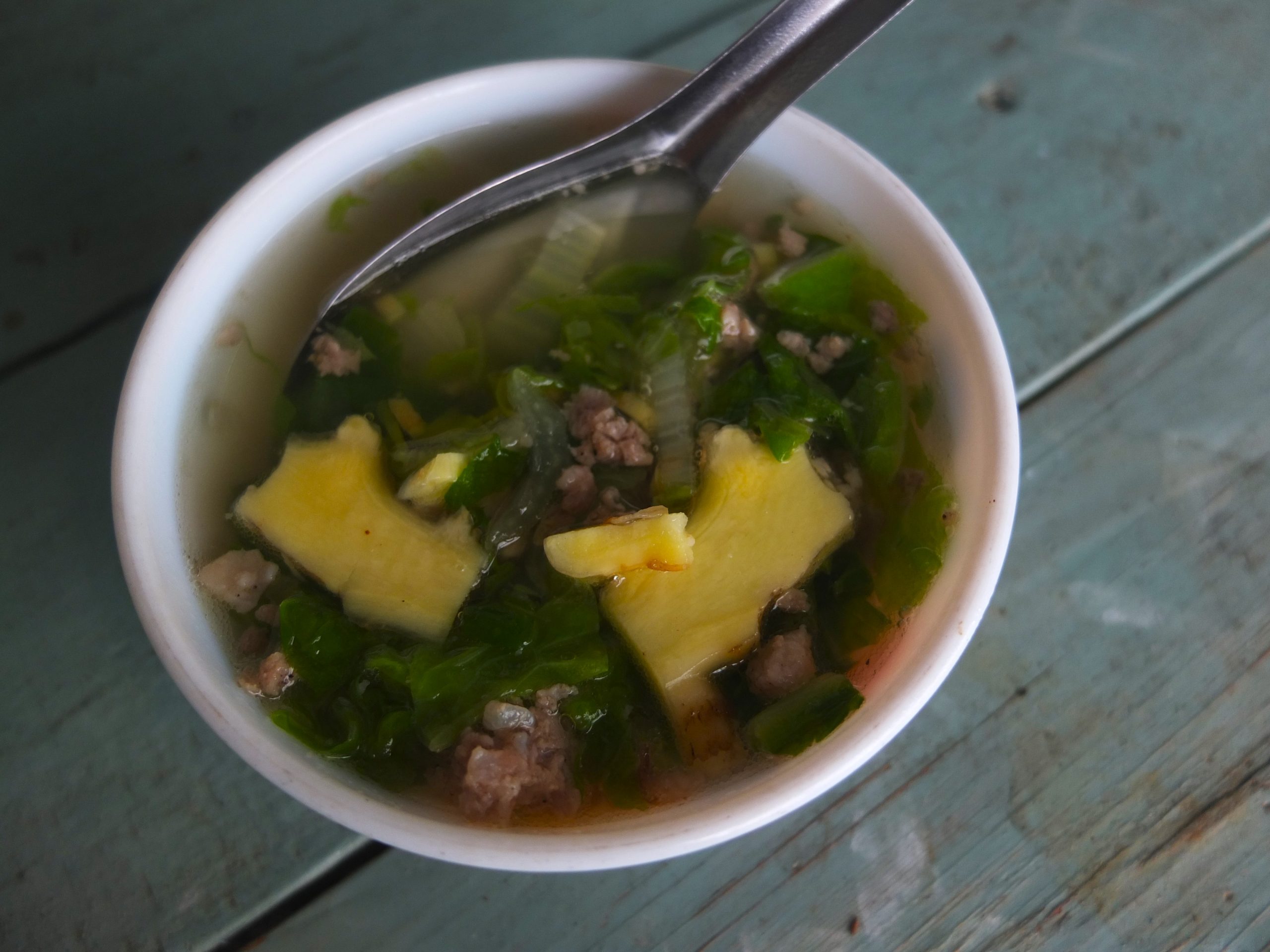
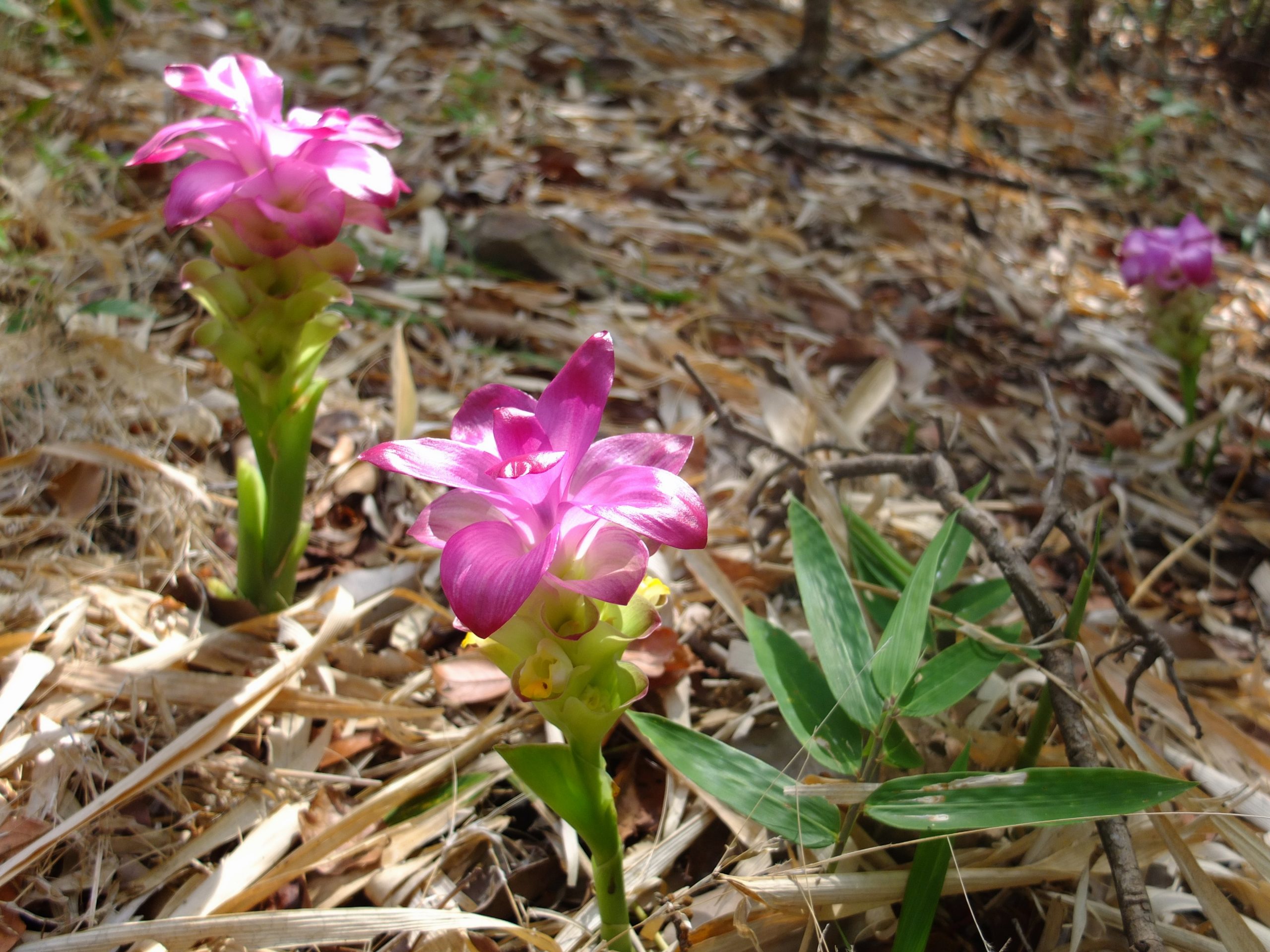
17. Turmeric (nghệ)
In my experience, fresh turmeric is much more popular in Central Vietnam than in other regions. Fish stew with turmeric (cá kho nghệ), stir-fried pig intestines with turmeric (lòng xào nghệ), and stir-fried eel with turmeric (lươn xào nghệ) are well-known dishes from the central provinces. They all look, taste and smell great, but fresh turmeric badly stains your mouth and hands when preparing or eating it. Because of this inconvenience, many people prefer to use turmeric powder to cook with, instead of using the actual rhizome. Pure turmeric powder is also a great ingredient when it comes to natural health remedies.
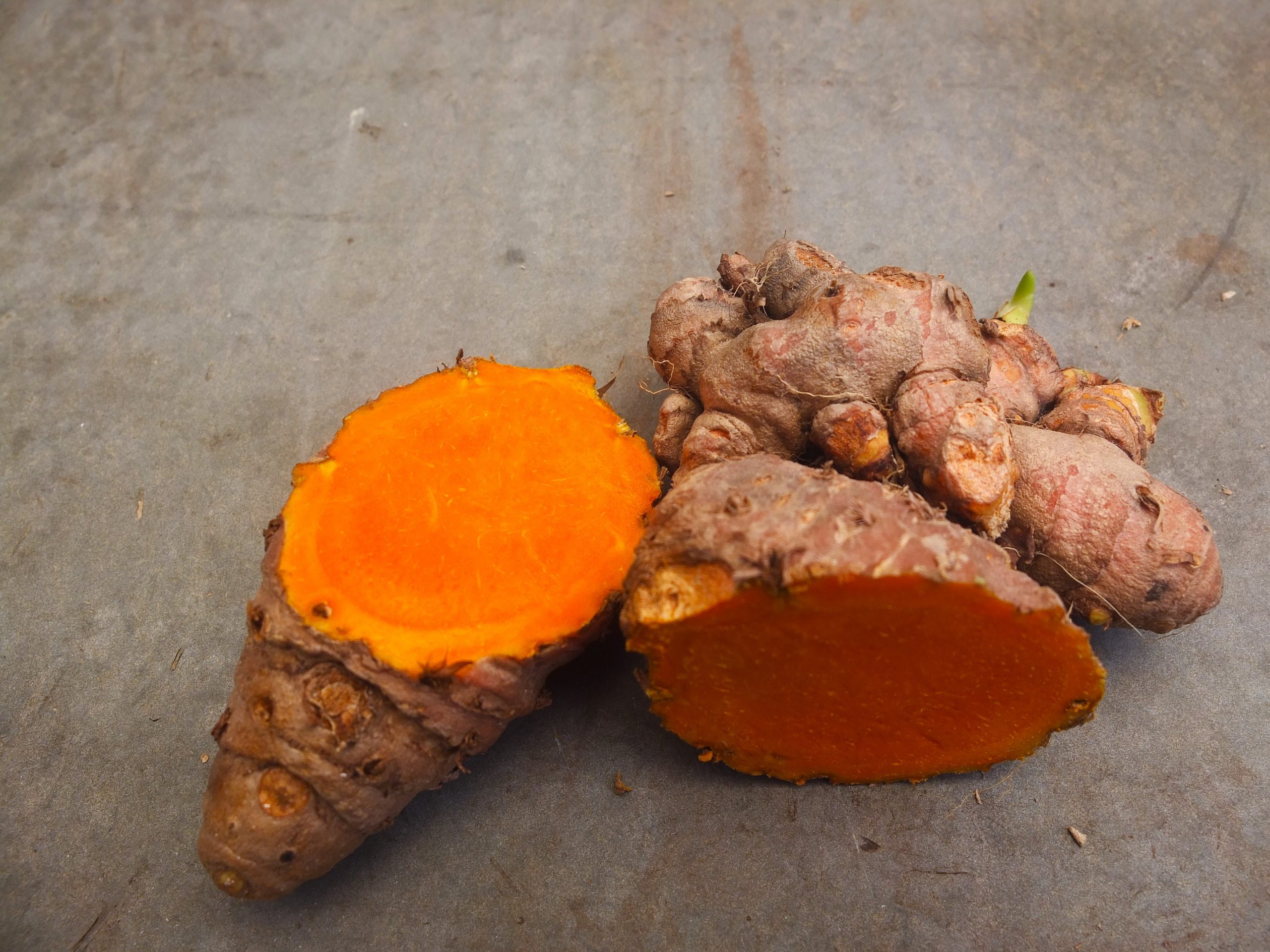

18. Galangal (riềng)
If ginger is more popular in the south and turmeric in the centre, then galangal is the spice of the north. Thịt giả cầy (a fake dog meat dish that uses pork as a replacement for the canine) is a typical northern dish in which galangal is the main flavour together with ginger and other spices. Cá chẽm kho riềng (stewed carp with galangal) and cá trê kho riềng (stewed catfish with galangal) are also great dishes that you must try when dining in the northern provinces. As someone who loves pickled and fermented food, my favourite use of galangal is to add it into a jar of cà pháo muối (fermented Thai eggplant) together with fresh garlic and chillies.


19. Lemongrass (sả)
Lemongrass is another multi-purpose herb. In Vietnam, only the stems are used for cooking. Almost all meat and seafood dishes taste great when cooked with a mixture of lemongrass and chillies: gà kho sả ớt (chicken stew with lemongrass and chilli), bò xào sả ớt (stir-fried beef with lemongrass and chilli), ếch xào sả ớt (stir-fried frog with lemongrass and chilli) to name just a few. One of the most famous Vietnamese noodle soups, bún bò Huế, would lose its magic without sa tế sả (shacha sauce – a mixture of chilli, oil and lemongrass), not to mention the bundles of sprigs of lemongrass boiling away in the cauldron of broth.
The leaf of lemongrass can be sun-dried to make lemongrass tea. However, my favourite use of the leaves is to mix them with other herbs (like holy basil) and aromatic leaves (such as lime leaves or five-leaved chaste tree leaves) in my garden to make a steam bath, especially when I get a cold or am feeling stressed.


20. Chilli (ớt)
There are many different varieties of chilli in Vietnam, and many ways to eat, preserve and serve chilli depending on the dish. In my experience, Central Vietnamese dishes are often heavy on the use of chilli – either in its fresh form, dried, mixed with oil or in chilli sauce. Some people say this must be a legacy of the Cham people and culture (an ancient Indianized kingdom in Central Vietnam), while others believe that due to the harsh weather in the central provinces, local people eat a lot of chilli to heat up their bodies and feel warmer. But I am more persuaded by a third hypothesis: As fish and other seafood are the main source of protein for people in Central Vietnam, they use chilli to balance out the rich fishy flavour of their dishes, and also to preserve their surplus in the form of fermented fish and seafood (these types of food are often fermented with lots of garlic and chilli).
Southern people also use a lot of chilli, but because they love sweetness in their soups, sauces and stews, the addition of sugar reduces the spiciness of the chilli to a certain extent. In the north, the flavour of food is generally milder and therefore chilli isn’t used as much compared to central and southern Vietnam.
Thin slices of fresh chilli (ớt sừng) or whole fresh chillies (ớt hiểm, ớt xiêm) together with chilli sauce and chilli oil are often available as a condiment on the table when you dine in local restaurants. Similar to garlic, the smaller variety of chilli is usually the best. The most famous variety in Vietnam is probably also the spiciest, known as ‘bird dropping chilli’ (ớt chim ỉa or ớt xiêm rừng) that grow naturally in the wild. One bite of the tip of this chilli will give you enough spiciness for an entire meal. You will see them more often in green than red. The red ones are usually preserved through pickling or fermenting.


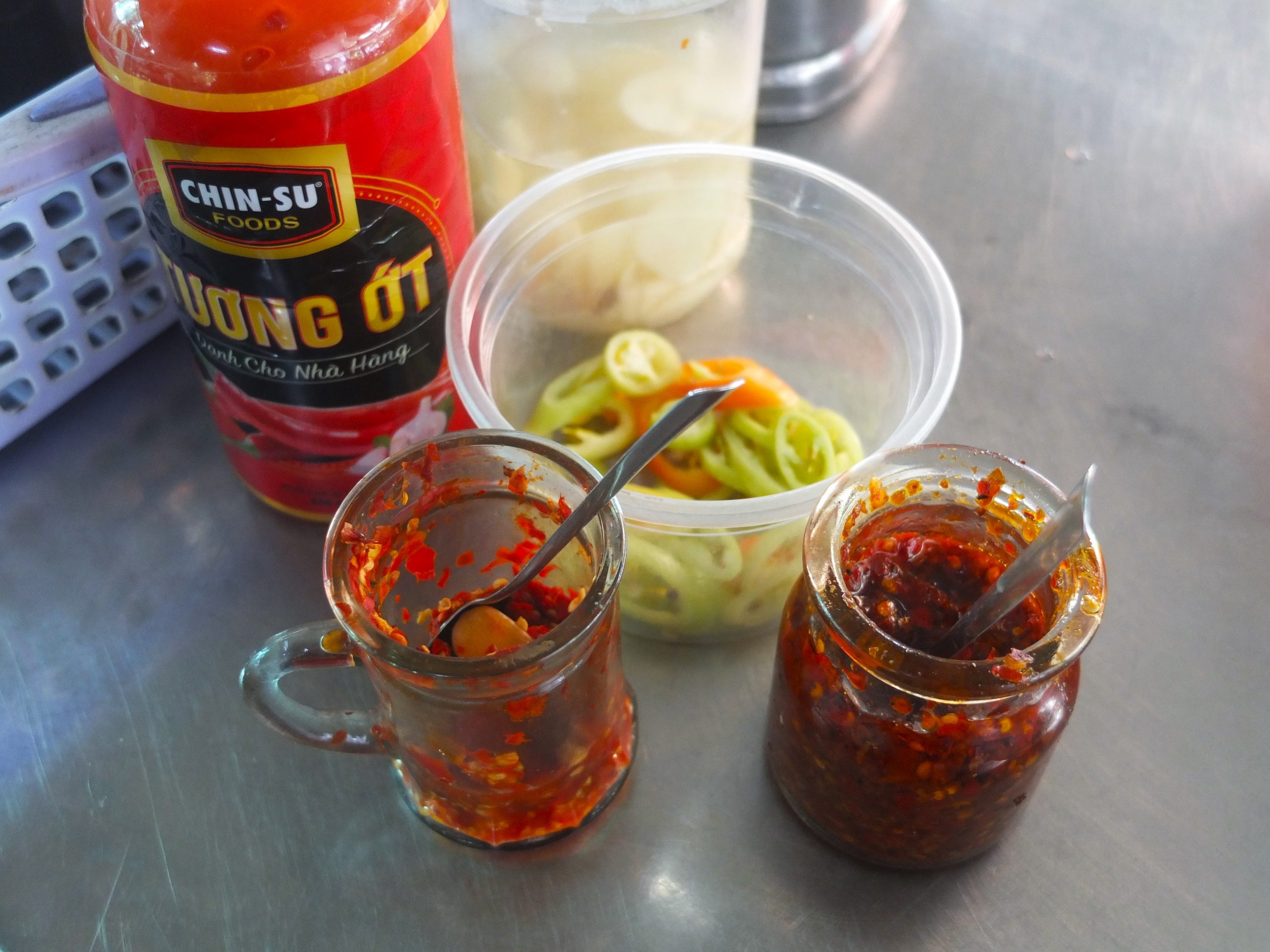
*Disclosure: All content on Vietnam Coracle is free to read and independently produced. Thảo has written this guide because she enjoys Vietnam’s herbs and spices and wants readers to know about them. For more details, see the Disclosure & Disclaimer statements and About Page
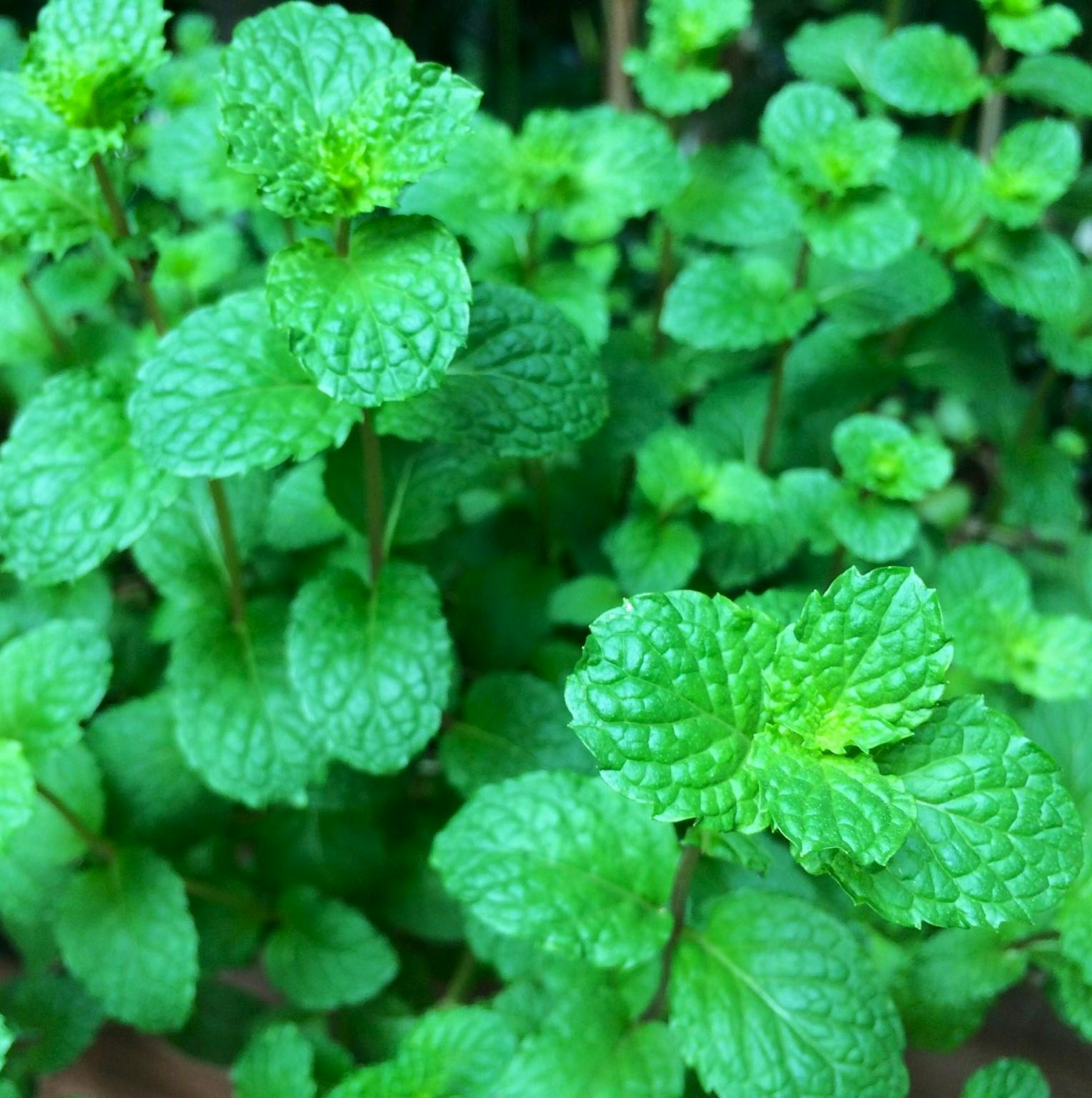
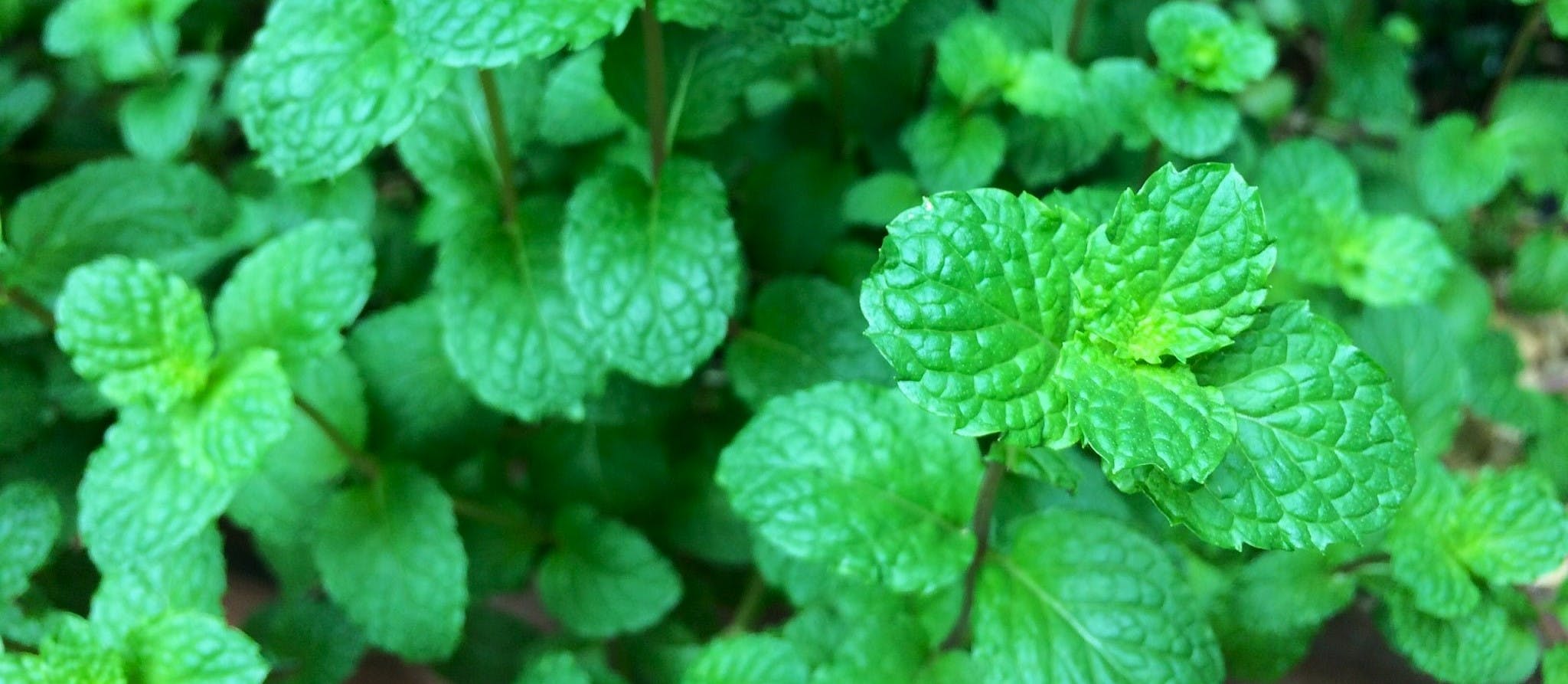

I love the way you present the herbs of Vietnam. I was in Hanoi one month ago and I want to learn more about Vietnamese herbs. . This is the perfect place.
Hi Lena,
I’m glad to hear you enjoy this guide – I myself use it almost every day in Vietnam! 🙂
Best,
Tom
Thao.
Så spændende at læse om de forskellige urter, og lære om smags oplevelser. Jeg og min mand er på rejse i Thailand for første gang, lige nu på Con dao, øerne. Min forventning er at det bliver en culinarisk rejse i smags oplevelse, fra syd til nord. Din artikel er meget hjælpsom. Mange tak.
Maria
Hi Maria,
I am glad you find this article helpful. It’s such a coincidence that I am in Con Dao islands at the moment as well, but I am leaving early tomorrow morning. You can find me this morning at De Lavie cafe on the rooftop of Takai supermarket building if you are around. It would be great to meet and have a chat 🙂
Hej igen Thao.
Tak for svar og så spændende at Du også er på Con Dao.
Vi gik forbi De Lavie Café, og fik en god kop kaffe, men det var ret sent på dagen i dag.
Tak for tipset på dette sted, her kunne vi sidde i ro et stykke tid.
Ønsker dig en god rejse videre, og endnu en gang tak for muligheden at mødes med dig.
De bedste hilsner maria og Carsten
Thao,
I really enjoy your article Vietnamese Herbs & Spices introducing in our country stabled dishes. I look forward to read your new writing in the near future.
Phuc (Paul) Pham
From Southern California
Hi Phuc,
Thank you, it’s great to hear you enjoyed this guide. I will pass your message on to Thảo. I hope you’ll enjoy her future articles too.
Best,
Tom
A fantastic article. As much as I love Tom’s motorbike guides, now that I have young children I fear my days of traveling that way are long past, so I love seeing these deep dives into other parts of living in Vietnam that other travel blogs never touch on. So it is cool to see something like this popping up.
Thanks, Justus.
I happened to be sitting next to Thảo when your comment came through, so I read it out for her – she’s delighted.
Best,
Tom
Wow, what an incredible breakdown Thao! My life seems to be an ongoing search for many of these herbs here in NZ.
Thanks, James. I hope you can find some of the herbs over in New Zealand!
Tom
Aghhhh such a great post, thank you Thảo, and Tom for initiating this! I’m yearning for when I can go back, and enjoy some of the dishes mentioned. In the meantime this is a fantastic guide for the few herbs I can find in Europe at Asian stores. 🤗
Hi Noemi,
Thank you. It’s great to hear you enjoyed this guide. I hope you can find some of these herbs and spices where you are now and cook something up!
Best,
Tom